#it has its cons as well after all it's very much a 50s western!
Note
I stopped reading Gardens of the Moon after 250~ pages because frequent character switches got confusing and I couldn't get a solid idea of the magic system. Does it ever get better?
I liked the the prologue, but I feel like they just dropped me into middle of 50 different powers scheming against each other after that. Also the coin is spinning.
TL;DR — This is a series that I love but really struggle to recommend.
Anon, it took me... ten years (?) to finish that book. I still think it's pretty terrible even having read the whole main series. So, I get where you're coming from lol.
That said, the writing quality immediately skyrockets when you hit Deadhouse Gates due to the fact that he wrote that book so many years after the first. But the books fly around a massive world and constantly switch around POVs, so...
If you don't like frequent POV switches, then you won't like the series. Flat out. There's something like 450 POV characters, but some of those brief POVs are some of the most powerful. Some of the characters are really high up in my faves of all time. Onos T'oolan, Tavore & Felisin Paran, Beak... Samar Dev??? Korlat!!! Itkovian, my beloved... there's some amazing characters mixed in with some truly awful ones.
And if you're someone that likes hard magic systems, you won't like Warrens. I don't like hard magic — when a book touts its "magic system" first, I'm immediately negatively biased towards it through no fault of the writer in 99% of cases — so it worked for me.
Pros:
Really broad worldbuilding with lots of cultural influences that aren't Western blended in with traditional Western fantasy.
Erikson has an excellent prose style later on (yeah, I know, it's very difficult to believe considering Gardens) and he has a very elegant way of expressing postmodernist ideas.
Extremely varied women characters (hell, Tattersail in Book 1 is already pretty unusual, sadly, in fantasy for being a fat character who's noted as extremely attractive — and Erikson doesn't stop at her when it comes to hot fat women, what a king.)
My favorite withdrawn, depressed, badass, ruthless lesbian commander character of all time, Tavore Paran.
Very strong messages about compassion and what it means to do "the right thing" in the face of overwhelming adversity.
Despite largely dealing with militaries and soldiers, the books are really about kindness, loss, and love, as well as finding the space within oneself to reject the notion of unconquerable despair.
Cons:
Erikson has, like, four character archetypes and they all blend together (barring a few standout characters.)
The worldbuilding is so broad that it sometimes feels pretty shallow.
Erikson loves using excessive epithets (the soldier, the ex-priest, etc.) and it's wild that those made it through professional editing.
Sometimes, Erikson likes his own prose style so much that we have to listen to identical characters internally monologue over identical woes and dramas. I love the Tiste Andii, but holy shit...
There are so many cases of plotting being hidden from the reader in transparent ways. Conversations where two people will refuse to elaborate their thoughts where they often cut off one another with inane, oblique reasons so that the reader is left in the lurch in a way that is often personally unsatisfying.
Possibly neutral or possibly a con, but there's a trillion content warnings scattered all through the books that are actually really, really serious (lots of sexual assault, and in several of those cases it's either completely unnecessary or actively detrimental to the story IMO.)
Having said all of that, I'll leave you with some quotes for why I still love the series despite its (to me) many flaws:
Open to them your hand to the shore, watch them walk
into the sea.
Press upon them all they need, see them yearn for all they
want.
Gift to them the calm pool of words, watch them draw
the sword.
Bless upon them the satiation of peace, see them starve for
war.
Grant them darkness and they will lust for light.
Deliver to them death and hear them beg for life.
Beget life and they will murder your kin.
Be as they are and they see you different.
Show wisdom and you are a fool.
The shore gives way to the sea.
And the sea, my friends,
Does not dream of you.
—Reaper's Gale
"No tyrant could thrive where every subject says no. The tyrant thrives when the first fucking fool salutes."
—Toll the Hounds
Against a broken heart, even absurdity falters.
Because words fall away.
A dialogue of silence.
That deafens.
&
The failure of hope has a name: it is called suffering.
—The Crippled God
#hey you can ask me things!#malazan posting??? it's more likely than you think#the conclusion to the main series still sits with me to this day#even if I CANNOT stand book 9 (it's literally an Act 1 in ~380k words)
2 notes
·
View notes
Text
Vintage Shows to Watch While You Wait for the Next Episode of WandaVision - The 60s
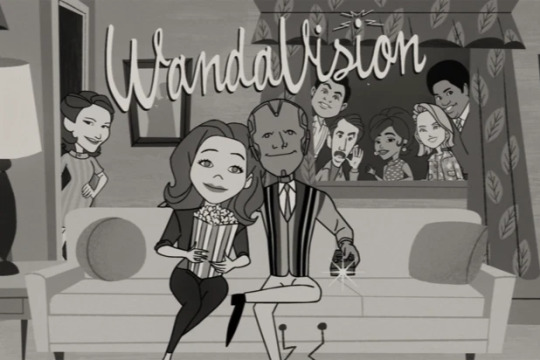
So the 60s is the era that Wandavision pulls most heavily from for it’s inspiration. So much so that one could make the argument that each of the first three episodes are all set in the 1960s. Episode one pulls from the early 60s with multiple Dick Van Dyke refences, episode two is very Bewitched inspired, and episode three is aesthetically very similar to The Brady Bunch which started in ‘69. As such it was hard to narrow down the list for this decade and I had to get creative in some ways.
1. The Andy Griffith Show (1960 - 1968)

The Andy Griffith Show gets kind of a bad rap now a days for being, supposedly, a conservative’s wet dream. People claiming it as such have apparently never actually seen the series. Oh yes, it’s very much set in white rural 60s America and will occasionally present the obliviously outdated joke, but the story of a widowed sheriff being the only sane man in a small town full of lovable lunatics, who prefers to solve his and others problems with negotiation and hair brained schemes as opposed to violence has far more in common with modern day Steven Universe than whatever genocidal fantasy fake rednecks have in their heads.
As the gif above shows Andy Griffith was very subtlety progressive for its time. Andy was a stanch pacifist, pro-gun control, treated drug addicts and prisoners with respect, and all the women he would date had careers, ect. and so on. It’s not a satire making any sort of grand political statements but the series had a moral center that was far more left than many realize.
But if it’s not a satire, then what type of comedy is it?
The Andy Griffith Show excels in what I like to call, ‘awkward comedy’. See everyone in Mayberry is far too nice to just come out and tell a character they’re making an ass of themselves, so therefore whoever is the idiot punching bag of the episode’s focus must slowly unravel as everyone looks on in helpless pity until said character realizes the folly of their ways and the townsfolk come together to make them feel happy and accepted once more. Wandavision takes this polite idyllic awkwardness and plays it up for horror instead of laughs.
2. The Dick Van Dyke Show (1961 - 1966)

The creators of Wandavision actually met with Dick Van Dyke himself to pick his brain and learn how sitcoms were made back then. Paul Bentley also took inspiration from Van Dyke in his performance of the sitcom version of Vision, while Olsen stated Mary Tylor Moore had a heavy influence on her character of Wanda. But more than just being a point of homage, The Dick Van Dyke Show was hugely influential in modernizing the family sitcom and breaking a lot of the unspoken traditions and ‘rules�� of the 50s television era. It’s also just really, really funny.
3.The Alfred Hitchcock Hour (1962 - 1965)

Bit of a cheat here. Alfred Hitchcock Presents actually started in 1955 as a half hour anthology show, but in ‘62 the show got a revamp and was extended into a full hour tv series. I knew I wanted The Twilight Zone to be covered in my episode one recap, but ‘The Master of Suspense’ couldn’t be forgotten. While The Twilight Zone reveled in the surreal and supernatural, Alfred Hitchcock pioneered the thriller genre and made real life seem dangerous, horrifying, and other worldly.
4. Doctor Who (1963 - present day) vs Star Trek (1966 - present day)

Just like how westerns dominated the air waves during the 50s, science fiction was the center of the cultural zeitgeist of the 60s. From Lost in Space to My Favorite Martian, space aliens and robots were everywhere. So naturally I had to name drop the two sci-fi juggernauts that still air to this today. If you thought that the rivalry between Star Wars and Star Trek was bad then you’ve never seen a chat full of Whovians and Trekkies duking it out over who is the better monster, the Borg or the Cyberman. But which one has the more influence over Wandavision?
Well Star Trek owes it’s existence to sitcoms. As with The Twilight Zone before it, Star Trek was produced by Desilu Productions and it’s co-founder and CEO, Lucille Ball, was the series biggest supporter behind the scenes, lobbying for it when it faced early cancelation. As with all things sitcomy, everything ties back to I Love Lucy in the end. However despite that little backstory, it would seem that the series has very little to do with Wandavision itself beyond being quintessentially American.
I would argue that Wandavision owes much to Doctor Who though. Arguably more so than any show mentioned in this retrospective. Time travel, alternate realities, trouble in quite suburbia, brainwashing, people coming back from the dead, ect... just about every trope you can find in Wandavision has also appeared in Doctor Who at some point. As a series that can go anywhere and do anything, Doctor Who was a pioneer of marrying genres in new and interesting ways.

5. Bewitched (1964 - 1972) and I Dream of Jeannie (1965 - 1970)

It’s hard to pick one series over another because they’re essentially the same show. A mortal man falls in love with a magical girl who upends their lives with magic filled hijinks as they try their best not to have their secret discovered by the rest of the world. And both have their fingerprints all over the DNA of Wandavision.
There’s only two core differences; Samantha and Jeannie have completely different personalities, with Sam being confident and knowledgeable and Jeannie being naïve and oblivious, along with their relationships with their respective men, Sam and Darrin being married and in love at the start of the series and Jeannie chasing after Tony in the beginning in a will they/won’t they affair, finally only getting together in the last season.
6. The Munsters (1964 - 1966) vs The Adams Family (1964 - 1966)

Fans of these two shows are forever sadden that there never was a crossover between them. Because they’d fit perfectly together. Both shows are about a surreal and macabre family living in American suburbia and disrupting the lives of their neighbors with their otherworldly hijinks. Sound familiar?
The main difference between the two shows is the way the characters viewed their placement in the world they inhabit.
The Munsters were always oblivious to the fact that didn’t fit in. They just automatically assumed everyone had the same personal tastes as them. Whenever they encountered anyone who behaved strangely around them they would write that person off as being the odd one rather than questioning themselves. As such the main cast was structured like a stereotypical sitcom family who just happened to be classic movie monsters.
The Addams were well aware that they were abnormal and they loved it! They lived life with in their own little world and didn’t care what anyone thought of them. As such the characters were far more colorful and quirky as individuals but there was little in the way of refences to other horror franchises beyond just a general love of the twisted and strange.
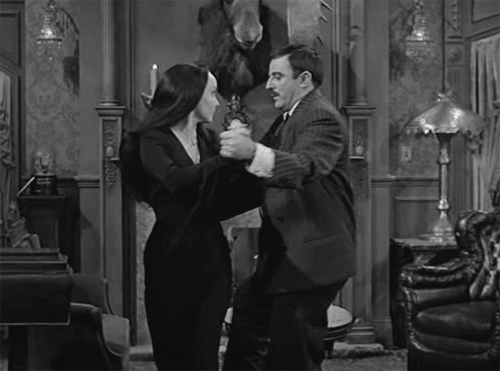
7. Green Acres (1965 - 1971) and the Rual-verse (1962 - 1971)

So the MCU is not the first franchise to bring viewers an interconnected universe to the small screen. Far from it, as sitcoms had been doing this for decades, starting with the ‘rualverse’. Beverly Hillbillies, Petticoat Junction, and Green Acres were all produced by the same company and were treated as spinoffs of each other, complete with crossovers and shared characters and sets.
Of the three, the last show, Green Acres, has the most in common with Wandavision. A well to do businessman and his lovely socialite wife settle down in small town America on a farm in order to get away from the stresses of city life, only to find new stresses in the country. Eva Gabor, herself a natural Hungarian, plays the character of Lisa as Hungarian making her one of the few non-native born Americans on tv screens during the cold war. Despite her posh nature and original protests to the move, Lisa assimilates to the rural life far easier than her husband, Oliver. Who, as the main comedic thread, can’t comprehend his new quirky neighbors’ odd and often illogical behavior.
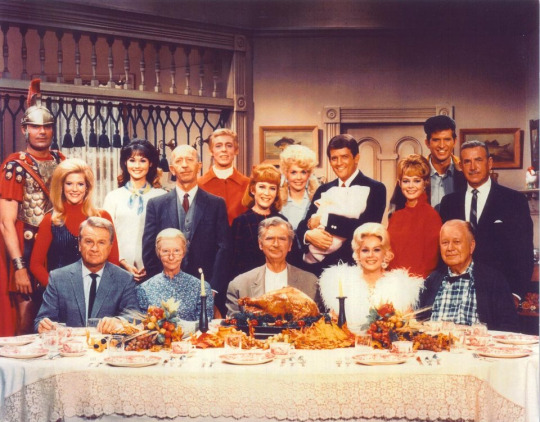
8. Hogan’s Heroes (1965 - 1971) and Get Smart (1965 - 1969)

So as comic fans have been quick to point out, it’s looking like both A.I.M. (Hydra) and Sword (Shield) will be players in the story of Wandavision. To commemorate that here’s two shows to represent those opposing sides. Although in truth, neither series has anything else in common with each other but I need to condense things down someway.
In Hydra’s corner we got Hogan’s Heroes. A show all about taking down Nazis from within.
I love, love, love, ‘robin hood’ comedies where a group of con artists try week after to week to pull one over the establishment. The Phil Silvers Show, Mchale's Navy, and Top Cat, just to name a few examples are all childhood favorites of mine. However while those shows had a lot of morally ambiguous characters, Hogan’s Heroes has very clear cut good guys and bad guys, cause the bad guys are Nazis and the show relentless makes fun of the third reich as should we all. In fact I was watching Hogan’s Heroes while waiting for the GA run off election results. Fortunately my home state decided to kick out our own brand of Nazis this year.
For Shield, we got the ultimate spy spoof, Get Smart. Starring, Inspector Gadget himself, Don Adams, as the bumbling Maxwell Smart. Get Smart, is a hilarious send up of Cold War espionage but the real selling point of the show, imho, is Max and his co-worker 99′s relationship. You can cut the sexual tension in the air with a knife all while laughing your ass off.

9. Batman (1966 - 1968)
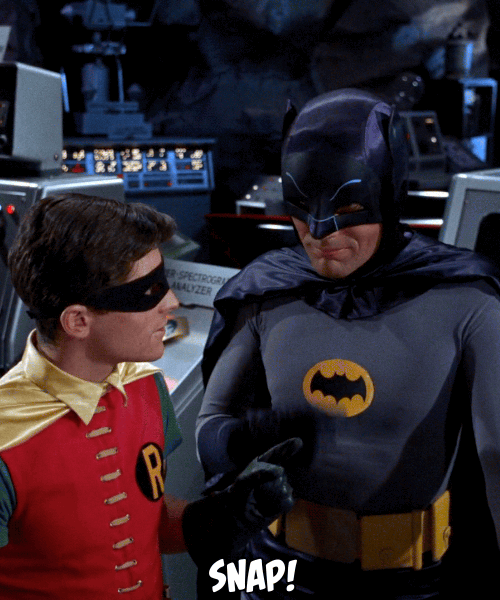
First was Superman and then came Batman. Yet while Superman was a serious action show, Batman was a straight up comedy. Showcasing that superheroes could indeed be funny.
Also shout out for Batman being the only show on this list to have an actual crossover with it’s competitor, The Green Hornet.

10. Julia (1968 - 1971)

Since episode two features the first appearances of Herb and Monica, let’s highlight the first black led sitcom since the cancelation of Amos ‘n Andy over a decade earlier. The show focuses on single mother and military nurse, Julia, as she tries to live her life without her recently decease husband, who was killed in Vietnam, as she tries to raise their six year old son on her own.
The series is cute. It’s more of a throw back to earlier family sitcoms where there’s no fantasy and life lessons are the name of the game. It’s the fact that the main character is a single black woman is what made the show so subversive and important at the time.
Runner Ups
There’s much good stuff in the 60s, so here’s some others that didn’t make the cut but I would recommend anyways.
Car 54, Where Are You? (1961 - 1963)
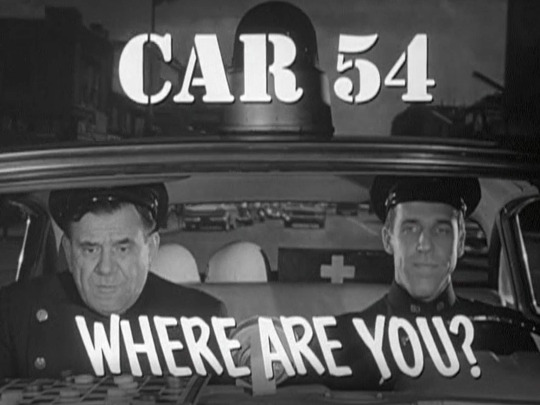
I call this the Brooklynn 99 of the 1960s. Bumbling but well meaning Officer Toody longs to do good in the world and help anyone in need, but often screws things up with his ill thought out schemes. He often drags his best friend and partner, the competent but anxiety riddled, Muldoon into his escapades.
Mr. Ed (1961 - 1966)
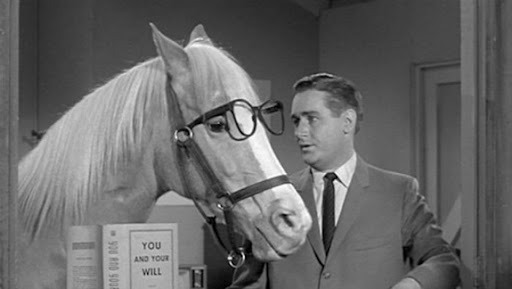
The grandfather of the sarcastic talking pet trope.
The Jetsons (1962 - 1963 and 1985 - 1987)
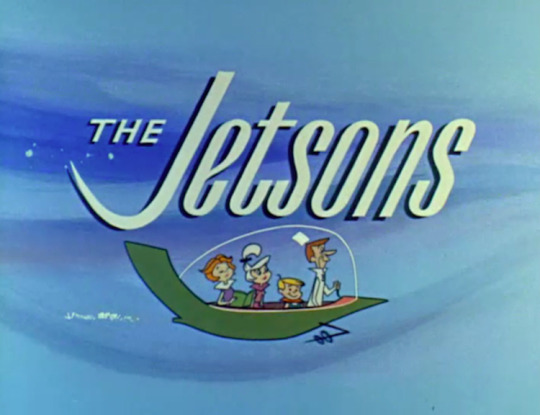
Hanna-Barbera often took popular sitcoms and just repackaged them as cartoons with a fantasy theme to them. The Jetsons has no singular show that it rips-off but is rather more a grab bag of sitcom tropes that feature, robots, computers, and flying cars.
The Outer Limits (1963 - 1965)

The Outer Limits was The Twilight Zone’s biggest competitor in terms of being a sic-fi/horror anthology series.
Gillian’s Island (1964 - 1967)
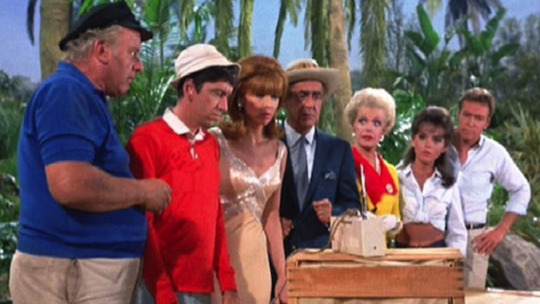
The only comparison to WandaVision I could think of was that this is a sitcom about people being trapped in one place. But by that point I was running out of room on the list. Still it’s one of the funniest shows on here.
So yeah, this took longer than expected cause there’s a lot, here. Hopefully the 70s will be easier. Which I’ll post on Friday.
113 notes
·
View notes
Text
Tips for caring for blackberries in the fall

Blackberry is similar to raspberry except that its fruit first turns red and then charcoal black. To me, they have a more interesting taste than raspberries, but the seeds are more visible on the teeth.
Thanks to the work of plant breeders and the completely thornless varieties they have produced, and thanks to travelers and tourists who have brought new foreign varieties with high-quality fruit to our continent, blackberries are becoming more and more popular and can be seen more and more often on garden plots.
However, blackberries tend to grow well only on a trellis, which must be erected in the second year of planting on the plot. The trellis can be placed in the most primitive place. If you have a dozen varieties of blackberries on the plot, plant them with a distance of 6.5 feet (2 meters) between rows so that they do not interfere with each other.
At the edge of the rows, hammer in ordinary metal tubes of 5-6inch (12-15 cm) diameter, make holes in them, and stretch strong wire through them. From the second year on, you can hang blackberry shoots from the wire or twine. Throughout the summer you will be harvesting blackberries and when autumn comes you will be wondering what to do next and how to caring for blackberries!
Don't worry: before you remove the blackberry from its stand and place it on a bed of soft leaves or wrap it up with it, you need to prune it hygienically and fertilize it, combined with hydration and moisturizing.
PRUNING BLACKBERRIES
There are many subtleties here. You must prune in such a way as to ensure the full growth and development of your blackberry plants later on. Of course, the first order of business is to remove all broken, dry, diseased shoots (no doubt about it), but what's next?
Next, you need to relentlessly cut off all shoots that have already borne fruit this year. However, if you are a lucky resident of the southern United States, it is possible not to cut them off completely, but to shorten them to a height of 5 feet (1.5 meters).
All other blackberry shoots, in the current season, unfortunately, our harvest did not satisfy us and you need to prune, removing about 6-8inch (15-20 cm). Most likely, this immature part, even under mulch, will start to behave badly: it may freeze, start to rot, and decay.
Naturally, after such an event, all the cut blackberry shoots must be taken out of the area and be sure to burn them, the ashes can be put in a bag: it will come in handy. Let her eat a little, but it (we do not tire of repeating) contains potassium and trace elements that can be fed to, for example, houseplants.
FERTILIZING AND WATERING BLACKBERRIES
In what order to do these necessary procedures does not matter at all. Fertilize first and then water, or water first, and then spread the fertilizer on the moist soil - the way you think best.
WATERING BLACKBERRIES
Watering well is really just hydrating and moisturizing. If someone tells you he doesn't water his blackberries at all and he has a luxurious yield every year, he is either lying or he has never seen a luxurious yield of blackberries at all.
In the first year after planting, when there is no trellis yet, you can only pour 3-4 buckets per square meter of soil. This is best done at the beginning of October when the soil is definitely not frozen yet and it is best to loosen it slightly beforehand. But remember, it should only be loosened slightly. The roots of blackberries must not be touched, and if the roots are damaged then they will start to grow and regrow shoots from the ground (usually with thorns, even if the original shoots did not have any thorns at all).
Plants that are still on the trellis, that is, the second and later years after planting, will of course need to be watered twice as much. This is fine. The water will soak deep into the soil and freeze slowly, without causing any damage to the roots. And, if there is a provocative winter thaw, the roots are unlikely to respond to it, and this thawing of blackberries will not cause any damage.
FERTILIZING BLACKBERRIES
After watering (let's decide to do just that) fertilize. 50 grams per square meter of dry calcium superphosphate and 25 grams per square meter of potassium sulfate have proven to be the best for blackberries in the fall. You can also cover them with humus about 1 inch thick.
Important! Nitrogen fertilizer should not be applied in autumn, as this will stimulate the growth activity of the shoots and all of them will freeze, maybe even in the quilt.
The easiest thing is done, now it is necessary to carefully remove and cover the blackberry bushes from the trellis.
Important! Alas, but absolutely no damage to the blackberries can withstand frosts of a few tens of degrees Fahrenheit without exceeding a few tens of degrees Fahrenheit. Then already begin negative changes in the tissue, especially at the tips of the shoots. There have been cases where temperatures have dropped sharply from above 32°F (0°C) to slightly negative values, but within a very short period of time, e.g. within a few hours, resulting in death or severe frostbite of uncovered blackberry plants.
THE RIGHT TIME TO MULCH BLACKBERRIES
The most appropriate time is often the end of October (in the middle of the US) when it has started to freeze and you can't wait for the warmth to arrive. The most dangerous thing is if the mulching will be followed by a week or even two weeks of really high temperatures or even rain, which can lead to blackberry rooting. For annuals, this is not fatal: from the root buds, the branches rejuvenate again like a bird's "phoenix". Of course, the gardener will lose the whole season, and if he makes repeated mistakes, he will lose the second season.
Here we must be guided by the indications of the weather stations, which sometimes tell us exactly when a steady cold spell is coming. And while we wait for the cold, you can treat blackberries with a 3% Bordeaux solution to rid the plants of winter stage pests and diseases.
As long as the temperature goes down below 32°F (0°C) and doesn't even rise above 32°F (0°C) during the day, blackberry mulching is very possible. As we have already said, the period for mulching blackberries is usually in late October or early November in the central part of the U.S. However, this is in the middle of the country.
If you live farther south, you may not need mulch at all, or even be prohibited (shoots will be prohibited because inside, under mulch, a lot of completely unnecessary moisture accumulates, and if there is too much moisture, you can even start rotting the roots, and then the blackberries will die completely). If you live in the north, then you can start mulching a whole month earlier.
Therefore, before you mulch, you need to remember some important rules.
Rule #1: Blackberries can be ruined not only by a winter with no snow at all but also by a provocative thaw where frost suddenly turns to rain. In this case, the buds will freeze to death, so try to use extra, such as dried leaves, in addition to the main shelter, which can "take the hit".
Rule #2: Do not rush to cover blackberries and wait for a light but steady frost, otherwise both roots and buds will simply uproot. As we have already mentioned, if you rush to cover, a lot of water will accumulate under it; in fact, a greenhouse effect will occur, which will damage the above-ground parts of the plant and the root system. In addition, due to the excess of water, various fungi and bacteria develop very actively. In this case, the shrub will regrow in spring, only if the above-ground part dies or if the top is a bit podgy, but if the roots are affected, the site will have to be laid again.
Rule #3: If you live in a western area where the thermometer doesn't go below 14°F (-10°C) in the winter, forget about mulching or use a single layer of agricultural fabric, which "breathes".
Those who have mulched their grapes will find it easier, while those who have not will find it more difficult. Blackberry branches, very carefully so as not to break, should be removed from their supports, wire, and placed on the surface of the soil that has been taken by frost, and gently pinned to them. If the bush is large, tie them together with twine before laying.
To exclude the blowing of blackberries, or at least minimize it, it is necessary to cover the shoots already laid on the surface of the soil with dry leaves (or lay branches on top of them, sprinkled with leaves in advance), and afterward with a soil mulch film, something that should be fixed and not tear the wind. This can be bricks on the edge, crates, plywood, etc.

THE PERFECT MULCHING MATERIAL
Gardeners have debated, are debating, and will continue to debate what is the best mulching material for blackberries. Some try to mulch with film, others use agricultural fabrics exclusively, but trust me, whichever way you choose, it still has pros and cons.
Take film for example: if you live in the middle of the country, that's fine, but if you're near the south, obviously the temperature changes in the winter can create condensation under the film, leading to the consequences mentioned above. If you have decided to use film, or if you don't have anything else handy, you can use a layer between the plants and the film, for example, a mulch, as in a layer of moss - with double protection: against moisture and against frost.
Then there are agro textiles, a relatively new non-woven material that has perfect permeability to water and air (they "breathe"). Even during the thawing period (which occurs in autumn and winter), agro textiles show their good side: they let water pass through and allow it to evaporate.
However, if there is too much water (i.e. active snowmelt in mid-winter), it cannot cope with the evaporation of excess water and it thaws. Therefore, in areas where thawing is active, you better warn yourself and use fir wood, corn, or at least dry leaves covered with twigs or branches.
If you have to choose between light and black wool, it is better to choose light wool, because black wool gets very hot in spring (if you live in the city and your blackberries are in a country house, when you go to the country house it will be cooked under black wool).
It is recommended for northerners to use sintepon synthetic mulch film, but it should not be placed on the plant, but on pre-layered leaves, dry and free from all kinds of diseases. However, in warm winters with low snow, plants in northern areas may suffer under this type of mulch.
MISTAKES WHEN MULCHING BLACKBERRIES
The first mistake: is not appearing under the cover of the poison of mice (believe me, they eat all the buds).
The second mistake: is using sawdust as insulation for blackberries. They absorb moisture very quickly, turn into just a block of ice, and then melt very slowly. I personally found a piece of ice as late as July in a pile of sawdust. What's wrong with that? Blackberries don't warm up in the spring, they slowly wilt under the ice and rocks instead.
The third mistake: is using straw for mulch. Straw actively attracts rodents, who settle in it, build "apartment buildings" and live there, eating blackberry buds and nibbling on shoots, and in spring it is not easy to remove all the semi-digested winter straw from the site.
The fourth mistake: is delaying the removal of mulch material. Remember to run to the site as soon as the snow melts and the temperature rises to remove the mulching material: a strong frost will not, but a thaw may occur. Make sure you remove the mulching material before the buds on the blackberries swell.
Basically, there is nothing particularly complicated: a dozen shrubs, primitive trellis, no less primitive shelter, and the main thing - all the time and at the same time, do not forget the rodents.
#ThumbGarden #Fruits #Blackberries #Blackberry #Garden #Orchard #Mulching #Tips #UrbanGarden #SmallGarden #OutdoorGarden #PlantCare #Care #Inspired #Fertilize #Watering #Pruning #Autumn #Fall
Author: Ms.Geneva
Link: https://www.thumbgarden.com/caring-for-blackberries/
Source: ThumbGarden
The copyright belongs to the author. For commercial reprints, please contact the author for authorization, and for non-commercial reprints, please indicate the source.
#thumbgarden#fruits and vegetables#fruits#blackberries#blackberry#vegetable garden#gardening#garden#flower garden#orchard#mulching#gardeningtips#gardening tips#tips garden#tips#urbangardening#urbangarden#smallgardenideas#smallgarden#outdoorgarden#plant care#plantcare#takecare#Care#inspired#fertilizer#fertilize#watering#pruning#Autumn
6 notes
·
View notes
Text
GreenGeeks Best WebHosting Service

Fun fact: do you know why Facebook moved its massive data center to Northern Sweden?
That’s because servers run hot, and cooling them down is expensive. Might as well keep them in a cold part of the world.
But more to the point in this GreenGeeks review: maintaining servers uses a ton of energy.
In fact, the Internet is one of the largest polluters in the world. Data centers account for 2% of the world’s CO2 emissions, about the same as the airline industry.
Well, if that’s a concern for you, I’ve got good news because the ‘green’ in GreenGeeks refers to their commitment to providing eco-friendly web hosting.
This is how it works, according to their website:
The platform is designed with a maximum use, no waste mindset.
For every amperage the company pulls from the grid, it matches it x3 in the form of renewable energy via the Bonneville Environmental Foundation
So they claim your website could be operating on a 300% green hosting platform!
While a growing number of hosting providers take the problem of energy seriously, (here’s an example from DreamHost), GreenGeeks really puts their ethos front and forward.
But what about other pros and cons, features and alternatives? Let’s put GreenGeeks through the wringer to see how it fares.
Table of Contents
GreenGeeks Prices
GreenGeeks Pros & Cons
What is GreenGeeks used for?
When not to use GreenGeeks hosting?
GreenGeeks Backups
GreenGeeks and WordPress
Final GreenGeeks Review Comments
Frequently Asked Quesitons
GreenGeeks Prices
Let’s first look at how much it costs per month to host your website on GreenGeeks. The first option is for shared hosting (the one most website owners need). You’ll also find that they offer WordPress web hosting. As far as I could tell, there is absolutely no difference between the WordPress and the shared hosting option.
As always, we’ll only be mentioning the regular price, which is what you pay after a first year at a discounted price. The first 12 months can be 50 – 70% cheaper.
Ecosite LiteEcosite ProEcosite Premium
Price (after renewal)$10.95 / month$15.95 / month$25.95 / month
You can purchase the plans for 12, 24 or 36 months. There is a significant discount for the longer terms, as you can see below:
GreenGeeks also offers VPS hosting, which comes with better performance, but a lot of limits depending on the plan you choose.
Price$39.95 / month$59.95 / month$109.95 / month
Finally, I should also mention that GreenGeeks has a few add-ons you can purchase to expand your hosting capabilities. These include:
Dedicated IP address: $48 per year
Premium AlphaSSL Wildcard: to secure SSL on multiple subdomains all at once.
WHMCS license: useful for resellers who want to bill hosting to their clients (note that GreenGeeks does offer a reselling option).
Last but not least, you’ll have to pay $25 for every backup restore, if you do it more than once per month (the first one is free).
What can you expect from each GreenGeeks plan?
As you can see in the above table, there’s a lot of unlimited stuff with their shared hosting and WordPress plans. That includes:
Unlimited bandwidth (or data transfer, which means the same thing)
Unlimited disk storage
Unlimited databases
Unlimited email accounts
Free SSL
The key limits to keep an eye on are maybe the number of ionodes, which is another way of saying the number of files on your site. It’s a very large number, mostly there to ensure you don’t abuse GreenGeeks’ generosity by hosting a file sharing website.
GreenGeeks Pros & Cons
Pros:
Green-minded: GreenGeeks is attempting to offset their server’s electricity consumption by using as much renewable energy as possible.
Unlimited data bandwidth: you can host one or multiple sites with complete peace of mind when it comes to visitor numbers and bandwidth.
Unlimited data storage: your site can be as large as you like, so good for video, high-res photos and ecommerce with loads of products. Just keep an eye on the number of files. Hosting more than 150,000 could void your plan’s contract.
Server locations: three continents to choose from, the US, Canada and Europe.
Heavily reduced long term plans: it’s not unusual to pay less for 24 or 36 month plans, but GreenGeeks is slashing their monthly prices by up to 70% for long term users.
Cons:
Missing advanced features: serious website owners and developers will need to look elsewhere for staging or premium DNSs.
No team management: it’s not possible to add multiple account users and to give permissions.
Lack of free backups: you get one automatic backup every 24 hours. One free restore per month, but the rest are paid. Not good enough.
Outdated design: Not a deal-breaker, but the whole system could do with a new coat of paint, which could also help with the user experience.
What is GreenGeeks used for?
I’d say GreenGeeks is best for website owners with green goals in mind. You can even show one of their green badges, to highlight on your site.
The generous bandwidth and storage is advantageous for those who own multiple sites. As far as the performance to price ratio goes, it’s good, and becomes more acceptable when you buy a long term contract of 24 or 36 months.
When not to use GreenGeeks hosting?
Anyone managing a team should consider that inviting others to join the account isn’t possible, and the lack of developer-friendly features could be a big no-no for certain businesses.
Developers with complicated workflows that need staging areas probably won’t be big fans of GreenGeeks’s platform either.
GreenGeeks Backups
Backups and restore are one of the areas I start considering a lot more these days when it comes to choosing a web host. A Sod’s law states: if something wrong can happen, it probably will, and at the worst possible times. This happened to us, and please learn from our mistakes when I say you should backup as often as possible.
GreenGeeks cPanel Backup Feature
Anyways, this is how it works with GreenGeeks. Option 1 is to use the cPanel backup tool. I’s a bit clunky and manual but by no means too difficult to do:
Login and click on the appropriate site’s cPanel button
Click Backup in the Files section
Click Home Directory under Download a Home Director
You can also download a database instead, or a full Zipped account backup, which is what you’ll need to keep on your local drives.
A couple of important things to note:
If your account is larger than 10GB in size, the whole cPanel backup option will be disabled. You’ll have to pay $5 per backup.
cPanel backups saved to your home directory will be deleted automatically after 48 hours, so it’s better to download the ZIP file locally.
The first monthly restore is free. After that, each restore costs $25. Note that it’s not unusual to restore at least a couple of times if there’s an issue (e.g. you chose the wrong backup to restore).
Option number two is to download files manually using an FTP program. If you use a CMS like WordPress or Drupal that also means you’ll need to backup databases. I always find that a big pain to do, and also slow. Which is why a better backup tool would have been useful.
GreenGeeks and WordPress
Although GreenGeeks has a special section on their website for WordPress hosting, I couldn’t find a difference between these plans and the share hosting ones.
In any case, here’s what you get for both if you want to install the world’s most popular CMS.
Easy installation: it’s not 1-click, but they use an install app called Softaculous, which simplifies the process for you. Maybe 4 or 5 steps, which you can read about here.
LiteSpeed Cache plugin: it’s a caching plugin that will make WordPress run faster on your site when properly configured. Be aware this is not GreenGeek’s own solution, but just a generic plugin they recommend.
LiteSpeed Cache Settings
To be honest, I feel like all the WordPress-optimized stuff is mostly there for marketing purposes. If you are really serious about WordPress experts (and you have the budget for it), I’d consider other options like Kinsta or WP Engine. SiteGround is also a great option if you need something a bit more affordable.
Final GreenGeeks Review Comments
GreenGeeks is certainly the provider we’ve tested that’s the most committed to protecting the environment. It’s an admirable choice, and businesses with a green goal will certainly be pleased to hear that they can host a website with a reliable performance, price, and low carbon footprint.
But there are nevertheless a few downsides to consider. The lack of advanced options like staging and team management features can be a dealbreaker for professional business owners. The limited backup features may be not enough for most.
And if you need a top-performing host, other (and more expensive) solutions like SiteGround, Kinsta or WP Engine could be considered.
It’s also not the cheapest provider out there. For example, at renewal DreamHost is more affordable and offers similar performance levels.
> Try GreenGeeks risk-free for 30 days
Frequently Asked Quesitons
How Do I Pay for GreenGeeks?
You can pay via all major credit cards and PayPal. No checks, money orders, wire transfers or Western Union payments.
Is Everything Really Unlimited?
Yes. Just keep in mind that there is a limit on the amount of files you can keep on your sites, though. It’s a really high number, so mostly a precaution against file-sharing websites.
Can I Get My Money Back?
There is an unconditional 30-day money back guarantee offer.
Is There an Uptime Service Guarantee?
Yes, if your website hosting drops below a 99.9% rate, GreenGeeks will refund some of your hosting fees.
Is GreenGeeks Really Environmentally-Friendly?
They’re certainly advertising as such. In practice this is how it works: GreenGeeks tells the Bonneville Environmental Foundation (BEF) how much electricity they use. The foundation calculates how much green energy they’ll need to use to make up for it. GreenGeeks purchases that amount in renewable energy.
So it’s not like their servers use less energy than standard hosting. However, they are certainly committed to making up for what they consume, and using as much green energy as possible.
Get GreenGeeks Now
#Best Web Hosting Services#Best Web Hosting Providers#best web hosts#web hosting#web host#web hosting provider#web hosting services#wordpress hosting#hosting
1 note
·
View note
Text
The Weekend Warrior Is Back!!! Raya and the Last Dragon, Chaos Walking and More
Welcome back to the Weekend Warrior!
This is probably going to be a little different from any of my previous columns, because New York City theaters reopen on Friday, and I swore that once they do, I would be writing about box office again. But this will also essentially be a previous column, so it will include reviews, it will include festivals and repertory series, and basically, whatever the hell I want to write about.
But let’s be realistic here. While there are a lot of movie theaters in New York City, not all of them will open, and they’ll all still have a capacity ceiling at 25% or 50 people in the larger theaters. Many of the larger multiplexes like AMC will be able to show films on two, three or more screenings to be able to make up for the limited capacity, but smaller theaters and those who have been doing well with the virtual cinema may remain closed. I know that the Angelika will be reopening to show some of the indies that haven’t had a theatrical release in NYC yet like Minari, and the IFC Center is reopening but with insanely strict protocols. (Don’t you DARE take off your mask even if you’re watching a three-hour movie! The good news is that they’re showing a lot of great movies on reopening including a comedy series that includes a number of Lynn Shelton movies.)
There’s also the issue of New Yorkers who are still petrified of being out in public, even those who have already been vaccinated and are possibly spending time in congregate settings that are just as likely to cause COVID spread than movie theaters. (I’m not gonna go on a rant about the egotistical and elitist film critics and journalists who have been ranting about movie theaters reopening for the past six months – for some reason, they think they’re as important as essential workers. Guess what, NAME REDACTED, you’re not.)

The big release of the weekend is the Disney animated movie RAYA AND THE LAST DRAGON, which will hit probably around 2,400 theaters on Friday as well as be available for a premium on Disney+. I honestly don’t know a ton about this premium streaming release, but this is the second one after last year’s Mulan, which came out (better sit down for this) six months ago!
This magical fantasy adventure centers around Raya (a teen girl voiced by Kelly Marie Tran), who is trying to save her world that has been relegated to dust by the destruction of a valuable magical gem that contains destructive spirits imprisoned there by the legendary dragons. When Raya finds the last dragon, Sihsu (voiced by Awkwafina), the two of them must travel across the land collecting the separated pieces of the gem to reassemble them and restore their world. Raya is thwarted along the way by her arch-nemesis Namaari (Gemma Chan) who wants to reunite the gem pieces to help her own city of Fang.
(Raya is preceded by the animated short Us Again, which is a nice wordless short about a cranky old man who reflects back on his younger days dancing with his wife. It’s okay, nothing particularly memorable.)
Raya and the Last Dragon, on the other hand, is pretty wonderful, a mix of action, adventure, magic and humor, directed by Don Hall (Big Hero Six) and Carlos Lopez Estrada (Blindspotting) in a way that blends those disparate elements in fun ways. I’ll freely admit that I was a little worried that Akwafina’s schtick was going to annoy me, but after a while her wise-cracking dragon grows on you. In fact there are actually so many other funny characters to add to the laughs that the more brought in the mix on Raya and Sihsu’s journey, the more enjoyable the film gets.
One of the reasons the film works as well as it does is that unlike last year’s Onward, it wasn’t just the two characters and what they had to offer but how their situation changes as it goes along and they visit different cities. I was pretty surprised by how well the film keeps you entertained and invested in the journey.
I also absolutely loved the score by Thomas Newton Howard, which may be even better than his score for News of the World, which I honestly think he’ll get another Oscar nomination for. This is a film that explores all sorts of emotions as well as its Southeast Asian myths, so I feel that I was always going to be a complete and total patsy for this movie since it combines a lot of things I like such as fantasy and Asian mythology. In that sense, Raya is also a nice companion to the recent Mulan, which made my Top 10 last year, but sadly never even got a nominal theatrical release.
So let’s talk about box office, something I haven’t done in almost a year. Last weekend, Warner Bros’ Tom and Jerry had a fairly spectacular opening of $13.7 million. Raya is the first new wide release Disney movie since Pixar’s Onward literally a year ago. That ended up opening to $39 million in 4,310 theaters but only grossed $61.5 million domestic after its legs were cut short by COVID one week later. Raya will likely open in about 2,500 theaters by comparison and that’s with limited capacity for safety, but it should fare decently against the second weekend of Tom & Jerry, and I could easily see it bringing in $15 million or even as much as $18 million, but again, we’re in the baby steps part of the reopening, and things are going to start slowly and keep building as the vaccine continues rolling out.

Being released theatrically by Lionsgate this Friday is CHAOS WALKING, the adaptation of Patrick Ness’ future-set young adult novel The Knife of Never Letting Go, which stars Tom Holland and Daisy Ridley. Holland plays Todd Hewitt, a young man living in a world with no women where men’s thoughts can be perceived by everyone around them. One day, he discovers a mysterious girl named Viola (Ridley), when she crash lands on this planet but her very presence puts Viola’s life in danger, so Todd agrees to accompany her to find her own people.
Yeah, where do I even begin with the latest film from director Doug Liman that was probably filmed two or three years ago and was being delayed even before COVID came along? That’s already a bad sign, but when see how “The Noise,” the way that we hear all of characters’ thinking emerges, it immediately feels like it’s gonna be a problem. Sure enough, it’s such an awkward plot device to watch smoke billowing from the heads of the various characters as we hear their thoughts that it takes most of the movie to get used to it, and yet, it’s still so comically inept a concept that you can’t help but laugh when Holland continually rants, “My Name is Todd Hewitt,” over and over to keep Ridley’s Viola to hear his pubescent teen boy thoughts on experiencing his first girl.
The thing is that the scenes with just Holland and Ridley aren’t bad, but when you have a movie with actors like Mads Mikkelsen, David Oyelowo, Demian Bechir and Cynthia Erivo, it’s disappointing that they can’t elevate the movie above anything other than the most obvious sci-fi (and Western) pastiches. Mikkelsen is the town mayor who is so obviously another bad guy, that he doesn’t bother to put too much into his performance cause we’ve seen him do it so many times before.
Liman is more than a competent filmmaker but he clearly is unaware of how watching clouds pool around the heads of characters as we hear and see their thoughts become material, and even the introduction of the particularly silly-looking aliens – called, get this, the “Spackle” -- makes you forget that this is a sci-fi film from the director of Edge of Tomorrow (or whatever it ended up being called). It’s not even particularly surprising when we find out what really happened to the women in Todd’s community.
I have a feeling that the problems within Chaos Walking come straight from the Patrick Ness source material and the fact that he decided to adapt it himself may have made him tone-deaf to how hard it is to make the film’s central premise work without eliciting guffaws even from the most dedicated or devout fans.
This is also opening in IMAX theaters this weekend, and when it comes to New York, that might be the ideal way to see it (if you so choose) since it’s generally bigger theaters with a maximum of fifty people. Honestly, I don’t think Chaos Walking will make more than $5 million this weekend even in what should be over 2,000 theaters and with the presumed star power of Holland and Ripley from their franchise work. This could be seen as counter-programming from the animated movie, although any teens ready to go back to the movies might stick with Raya as well. Honestly, how this didn’t end up getting dumped to streaming compared to some of this weekend’s better movies is beyond me.

Offering a bit of indie counterprogramming for the two (relatively) big studio movies is Eddie Huang’s BOOGIE, the directorial debut of the Fresh Off the Boat producer, being released by Focus Features into who knows how many theaters? (1,000 or less, I’d Imagine.) It’s a coming-of-age movie starring Taylor Takahashi as Alfred “Boogie” Chin, a Queens high school basketball ace who dreams of one day playing in the NBA but whose temper gets him in trouble with the scouts for college where he’s hoping to get a scholarship.
I was kind of looking forward to this one, because I generally enjoy Fresh Off the Boat, and I’m interested in what stories Huang has to offer as a filmmaker. The film has its merits but it’s not necessarily Takahashi, who isn’t strong enough to really keep the viewer’s interest.
On the other hand, Huang was wise to cast the amazing Taylour Paige (Ma Rainey’s Black Bottom) as Boogie’s love interest and even better than both is Pamelyn Chee as Boogie’s “Tiger Mom” mother who is sugary sweet when it comes to wooing possible recruiters but also is a complete nightmare to his ex-con father (Perry Yung).
Thinking back on the movie, I definitely didn’t hate it as there were character relations and dynamics I enjoyed, but not all of it clicked with me, and it’s hard to imagine this one connecting with audiences as well as some of the other movies out this week, unless you’re into college hoops, which I am not.
As far as box office, I’m not sure this will be in more than 1,250 theaters (if even that) and even if it plays in New York City (where it would normally find its biggest audience), I just don’t think there’s much awareness for the movie out there. In fact, I see it only playing in one movie theaters in NYC, and that’s way up in Harlem, presumably hoping to get the street ball fans, but I’m not so sure too many up there will be interested in an Asian-American story, so honestly, I don’t think this will make more than $500,000 or $600,000 tops.
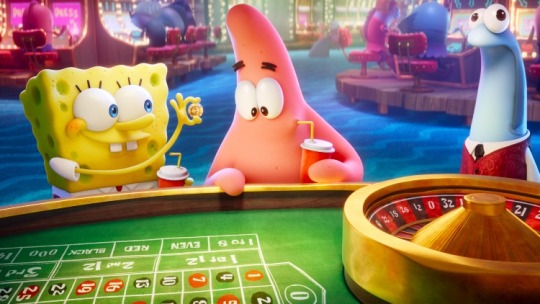
Besides the reopening of movie theaters, the other big excitement this week is the launch of Paramount+, the relaunch, spin-off, rebranding of CBS All Access that I had also been considering checking out. It will launch on Thursday, March 4, with the animated family movie THE SPONGEBOB MOVIE: SPONGE ON THE RUN, which was supposed to be released by Paramount Pictures last year and did get a bit of a theatrical release in Canada while theaters were open there last year. This one involves SpongeBob and his buddy Patrick trying to retrieve SpongeBob’s beloved pet snail Gary, who has gone missing.
I generally enjoyed the first to SpongeBob movies, even though I never watched the show, and the regular creators and voice actors always seem to step up their game in terms of the wackiness whenever they’re given a chance to bring the lunacy to the big screen. In this case, it comes in the form of some of the guests including Snoop Dog and Danny Trejo in an odd Western section complete with musical number or Keanu Reeves introduced in the same section as a tumbleweed named Sage. (Oddly, this also features Awkwafina providing the voice of a robot, and I kind of liked her in more of a subdued role like this.) Although SpongeBob and his friends are CG animated, the movie doesn’t try too hard to integrate the live action in as fluid a way as last week’s Tom and Jerry – live actors just kind of show up – but it’s still pretty darn entertaining to watch another movie in which everyone involved, including director Tim Hill (who shockingly directed last year’s awful The War with Grandpa!), just going about making the movie as crazy and wacky as possible, something that should appeal to kids and… THC-laced adults (preferably not those watching with kids) … to get an overall enjoyable experience. Maybe it’s no surprise that I was particularly tickled with SpongeBob and Patrick’s adventures in Las Vegas.
Along with that, the streamer will have a new animated series called KAMP KORAL: SPONGEBOB’S UNDER YEARS, which is a CG-animated series that focuses on SpongeBob and friends when they were younger, which actually is one of the funnier bits in the movie as well.
There’s a lot of great stuff coming to Paramount+ that should make it a real player in the streaming world, and that includes all of the Paramount movies that will be streaming on it, both those that are getting a theatrical release this year and the studio’s absolutely vast library over the past 100 or so years.

And that’s not all! This weekend also sees the release of the sequel thirty years in the making, COMING 2 AMERICA, which will launch on Amazon Prime Video on Friday (after being sold to the streamer by Paramount, oddly), so yeah, there’s plenty of options to keep people home this weekend even with theaters reopening.
Eddie Murphy and Arsenio Hall are back as Prince (now King) Akeem of Zamunda and his trusty aide Semmi, and in fact, almost every character and actor from the movie has returned, as the duo return to America to find Akeem’s illegitimate son Lavelle (Jermayne Fowler) in queens, hoping to teach him the Zamundan way so he can take over as King after him. Unfortunately, Lavelle is joined in Zamunda with his family which includes mother Leslie Jones and uncle Tracy Jordan.
Unfortunately, reviews are embargoed until Thursday, so I’m not sure I’ll get to review this one, but I did like the movie, more than I thought because my rewatch of the original 1989 movie led me to believe there was a good reason I hadn’t watched it in over thirty years. The sequel offers a lot of originality and humor in the forms of Leslie Jones and Tracy Jordan, but that’s all I’ll say about it for now.
Incidentally, you can check out an interview I did with director Craig Brewer over at Below the Line AND I also talked to the film’s make-up team, and after you see the movie, you’ll understand why I’m holding it until after people have seen the movie.
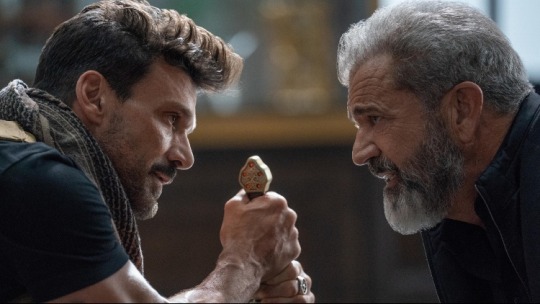
Another movie that would probably have gotten a theatrical release but now will be seen on Hulu is the Joe Carnahan-directed BOSS LEVEL, reteaming him with long-time collaborator Frank Grillo as a man who cannot die, because he’s living in a single day that’s being repeated over and over as he takes on a series of assassins sent to kill him.
This as a really fun action-comedy that never lets down in terms of either half of that genre, and it’s kinda groovy to see Mel Gibson playing a fairly key role since he became the master of that action genre with the Lethal Weapon movies. But this really is Frank Grillo’s show as a leading man, and while I can understand some thinking him not having enough charisma for that sort of thing, I respectfully disagree.
We get into this high-concept premise pretty quickly as we watch his character, Roy Pulver, take on a string of assassins for his over 100th attempt to do so, and as per the title, it is a lot like a video game where Roy has to defeat all of the assassins on his way to the big boss, Gibson’s The Colonel. Apparently, Roy’s wife Gemma (Naomi Watts) has been killed by the Colonel or his thug (Will Sasso) so Roy is now on a quest for revenge. But first he has to survive the onslaught of killers, all of whom he’s given cute nicknames.
Easily my favorite of the killers is Selina Lo’s Guan Yin, a feisty swordswoman who proves to be the most formidable opponent for Roy. I won’t say how he bests her, but it does involve Michelle Yeoh, who has such a strange nothing appearance in one section of the movie, you wonder what she’s doing there. In fact, the movie does hit a slight lull after the initial concept is introduced, but it
Listen, I’ve long been a fan of Carnahan’s dark sense of humor and to some, it might seem mini-spirited, to me it harks back to one of my favorite movies he directed, Smokin’ Aces, a similar movie with a crazy ensemble cast, though maybe a slightly smaller budget. Still, Carnahan is a terrific action director, which makes this one of the stronger action movies in a while, and he finds a way to take a fairly simple premise and make it bigger in that Roy’s dilemma turns into something where he has to save the world, but also something more emotional and personal as he tries to bond with his son before said world ends. I guess in many ways, it’s hard to put into words what makes Boss Level so special, but I can only hope that Ryan Reynold’s Free Guy is as good as this after being delayed so many times, because this will be a tough act to follow for sure.
Over at the Metrograph, still closed physically unfortunately, they’re doing a series this week called “David Fincher/Kirk Baxter” which looks at the relationship between the director and his frequent editor, showing a series of movies over the course of the week: The Curious Case of Benjamin Button, The Social Network
The Metrograph has a lot of movies as part of its digital membership (just $5 a month) including Chloé Zhao’s very first film, Songs My Brother Taught Me, which was available to members through Wednesday night. (Sorry, I tweeted about it multiple times if you missed it.)
This week also launches the 26th annual “Rendezvous with French Cinema” up at Film at Lincoln Center, which was actually one of the LAST events to happen up there LAST year. This year, they’re keeping things safe by holding it virtually. It runs from March 4 through March 14, kicking off on Thursday with Sébastien Lifshitz’s Little Girl, which will be released by Music Box Films in the Fall. There’s a lot of fairly recent French films with an all-access pass available to rent all 18 films for $165. Unfortunately, I haven’t seen anything, so can’t really recommend anything but I’ll probably be checking out the free talk “How Music Makes the Film” on Monday, March 8.

Margaret Qualley (Once Upon a Time … in Hollywood) and Sigourney Weaver star in Philippe Falardeau’s MY SALINGER YEAR (IFC Films), based on Joanna Rakoff’s book. Set in New York of the ‘90s, Qualley plays Joanna, a grad school student who dreams of becoming a writer who gets hired as an assistant to literary agent Margaret (Weaver), whose biggest client is J.D. Salinger. Although Joanna’s role is more of a glorified secretary, she gets to go through Salinger’s fan mail from around the world, and she decides to start answering some of the letters to the author, an experience that helps her find her writers’ voice.
I wasn’t sure if this movie would be for me, but I find Qualley to be quite delightful, and this was a light film with a comedic tone from the Canadian filmmaker of the boxing movie, Chuck, and the Oscar-nominated Monsieur Lazhar. I enjoyed its look at the New York literary world of the 1990s, and it kept me quite invested even if I’m not particularly invested in Salinger’s work or an obsessive with The Catcher in the Rye as many are. Weaver is also fantastic as Joanna’s boss – think of a lighter version of Meryl Streep in The Devil Wears Prada – and also enjoyed the tentative relationship between Joanna and her writer boyfriend Don, played by Douglas Booth.
Basically, Falardeau has created another generally wonderful and crowd-pleasing movie that sadly missed its opportunity at a festival run to build an audience after debuting at the Berlinale almost exactly a year ago. Presumably, this will open at the reopened IFC Center this weekend. (In fact, IFC Center released its reopening schedule and it’s a pretty cool mix of IFC Films movies from the past as well as some of the Netflix movies that weren’t released in NYC previously.)

Okay, let’s get to some other releases from the week, beginning with Ivan Kavanagh’s SON (RLJEfilms/Shudder), the latest film from the Irish director of The Canal, a fantastic horror film that premiered at the Tribeca Film Festival about seven years back. In this one, Andi Matichak from Halloween plays a single mother whose son David (Luke David Blumm) suffers from all sorts of maladies but when she starts getting closer to a local detective (Emile Hirsch), he discovers that there’s a lot more to her past and to her son’s ailments.
Honestly, I do not want to say too much about the plot, because there are so many shocking surprises in the movie once you think you know where it’s going, although I will say that it has connections to films like The Lodge and shows like Servant, but it also does a good job fucking with the viewer’s head, so you never know what’s really happening and what might be in the characters’ heads.
I will say that the movie is very dark and quite disturbing with lots of gruesome gory sequences, but if you’re a fan of smart horror, you’ll want to check out Son. (I’ll have an interview with Kavanagh over at Below the Line next week.)

Sony Classics is finally releasing Michael Dweck and Gregory Kershaw’s doc THE TRUFFLE HUNTERS (Sony Classics), which has been playing on the virtual festival circuit all the way back to Sundance last year, so we’ll see how many people are left to see it. It’s set in the forests of Piedmont, Italy where a handful of 70-to-80-year-old men are on the hunt for the rare white Alba truffle, which has resisted all modern science to be cultivated.
For whatever reason, I procrastinated on watching this movie for most of last year, maybe because I’m not that big a fan of cinema verité docs, but this is infinitely entertaining between the various men featured – including a lot of real characters in there – and how the movie shows their close bond with their truffle-sniffing dogs. This is a genuinely enjoyable movie that I feel can appeal to a wide range of viewers, although be aware that is in Italian, so maybe one should consider that even with the cute dogs, this should probably be watched by teen or older rather than small kids. (I don’t remember anything particularly racy, but the movie is Rated PG-13.)
Staying in the dog realm, Magnolia Pictures is releasing Elizabeth Lo’s documentary STRAY on Friday, which documents the life of Zeytin, a stray dog living on the streets of Istanbul, and some of his dog frenemies. Actually, this was a pretty wonderful film that I quite enjoyed, although there were a few dog fight sequences that disturbed me a little bit. But it’s a great look at Turkey through the eyes of some of the canines on the street, how they interact with the humans around them. Essentially, Stray is the dog version of Kedi, but I’ve seen other similar docs like this including Los Reyes – this one is just as strong as either of those movies, the images of all the beautiful dogs accompanied by gorgeous string music by Ali Helnwein that helps you understand the dogs’ complex emotions. Seriously, if you like dogs, you can definitely do worse than the previous two movies mentioned. Stray is available via Virtual Cinema, including that of the Film Forum.

Filmmaker and EDM artist Quentin Dupieux (Rubber) is back with his latest, KEEP AN EYE OUT (Dekanalog), starring Belgian comedian Benoît Poelvoorde as police officer, Commissaire Buran, investigating a guy (Grégoire Ludig) who has discovered a dead body in a puddle of blood outside his apartment building. The prime suspect is then left alone with a one-eyed rookie, and if you’ve seen any of Dupieux’s other films, you’ll probably know to expect the unexpected as things get crazier and crazier. (I seem to remember seeing this last year at some festival, maybe FantasticFest, but I’ll have to watch again before remembering if this was one of Dupieux’s movies that I liked.) This will be available in select theaters and also in virtual cinema this Friday. (Oddly Dupieux’s last movie, Deerskin, debuted at last year’s “Rendezvous with French Cinema” right before theaters shut down for a year, and I don’t want to be superstitious, but yeah, I’m worried.)
Barnaby Thompson’s Ireland-set crime thriller PIXIE (Saban/Paramount) stars Olivia Cooke (Sound of Metal) and Alec Baldwin with Cooke playing Pixie Hardy, a young woman who wants to avenge her mother’s death by pulling off a heist that will allow her to leave her small town. The crime goes wrong, and she’s forced to team up with a group of misfits including Baldwin’s Father McGrath.
Bradley Parker’s action-thriller THE DEVIL BELOW (Vertical) deals with a team of researchers who are investigating a series of underground coal mines in Appalachian country that have been on fire for decades where they discover a mystery. It’s getting a combined theatrical, VOD and digital release Friday.
Phil Sheerin’s directorial debut THE WINTER LAKE stars Emma Mackey (Sex Education) as Holly, a young woman with a secret that’s uncovered by her unstable neighbor Tom (Anson Boon from Blackbird) and the two of them are pulled into a confrontation with her father, who wants to keep the family secret buried. This will be in select theaters on Friday, On Demand on Tuesday, March 9 and then on DVD March 23.
Dylan McCormick’s SOMETIME OTHER THAN NOW (Gravitas Ventures) stars Donal Logue and Kate Walsh, Logue playing Sam who is stranded in a small New England town after his motorcycle crashes into the ocean seeking refuge at a run-down motel run by Walsh’s Kate, a similarly run-down and lost soul. When Sam learns that his estranged daughter Audrey, who he hasn’t seen in 25 years, lives in the town, he starts to learn more about why he ended up there.
Jacob Johnston’s DREAMCATCHER (Samuel Goldwyn) stars Travis Burns as Dylan aka DJ Dreamcatcher who meets up with two estranged sisters at the underground music film festival, Cataclysm, where they become entrenched in 48 hours of violence and mayhem after a drug-fueled event. Sounds delightful.
Some of the other VOD stuff hitting the ‘net this week include: 400 Bullets (Shout! Studios), Sophie Jones(Oscilloscope), Dementer (Dark Star PIctures), Black Holes: The Edge of All We Know (Giant Pictures)
That’s it for this week. Next week, theaters hopefully will remain open, and we’ll have some new movies to write about.
1 note
·
View note
Text
Headlines
Climate change makes freak Siberian heat 600 times likelier
(AP) This year’s freak Siberian heat wave is producing climate change’s most flagrant footprint of extreme weather, a new flash study says. International scientists released a study Wednesday that found the greenhouse effect multiplied the chance of the region’s prolonged heat by at least 600 times, and maybe tens of thousands of times. In the study, which has not yet gone through peer review, the team looked at Siberia from January to June, including a day that hit 100 degrees (38 degrees Celsius) for a new Arctic record.
Mail delays likely as new postal boss pushes cost-cutting
(AP) Mail deliveries could be delayed by a day or more under cost-cutting efforts being imposed by the new postmaster general. The plan eliminates overtime for hundreds of thousands of postal workers and says employees must adopt a “different mindset” to ensure the Postal Service’s survival during the coronavirus pandemic. Late trips will no longer be authorized. If postal distribution centers are running late, “they will keep the mail for the next day,″ Postal Service leaders say in a document obtained by The Associated Press. “One aspect of these changes that may be difficult for employees is that—temporarily—we may see mail left behind or mail on the workroom floor or docks,″ another document says. The changes come a month after Postmaster General Louis DeJoy, a major donor to President Donald Trump, took over the sprawling mail service. In a memo titled “PMG Expectations and Plan,″ the agency said the changes are aimed at “making the USPS fundamentally solvent which we are not at this time.″ Postal Service officials, bracing for steep losses from the nationwide shutdown caused by the virus, have warned they will run out of money by the end of September without help from Congress. The service reported a $4.5 billion loss for the quarter ending in March, before the full effects of the shutdown sank in.
Twitter Hack Exposes Frailty of the Digital Public Square
(Foreign Policy) Twitter accounts belonging to high-profile business leaders and politicians were hacked yesterday in the biggest security breach in the website’s 14-year history. Fortunately, the goal of the hackers was more con artist than saboteur. Accounts belonging to business leaders such as Jeff Bezos and Bill Gates as well as Democratic presidential candidate Joe Biden and former U.S. President Barack Obama all posted a version of the same message: A call to donate money to a cryptocurrency account in return for your money back twice over. Despite the millions of followers these accounts have, the scam seems to have convinced very few of them. Only about $120,000 in bitcoin has been deposited to the hacker’s accounts, according to Reuters. Although the refrain “Twitter is not real life” is often used as a putdown toward the social media-addled masses, the website can have an outsized grip on reality. In 2013, a hacker took control of the Associated Press Twitter account and wrote a hoax tweet describing explosions at the White House. The tweet was quickly deleted, but not before tricking high-frequency trading algorithms—sending the U.S. stock market into a flash crash.
Barbados wants you to work from its beaches during the pandemic
(NYT) In the first half of 2020, governments around the world imposed entry restrictions or strict quarantine procedures; flight traffic fell to its lowest level in decades. Many are confined not just to their countries, but also to their homes, as offices were shut down along with travel. But even as the pandemic continues to rage, the government of Barbados, a country in the eastern Caribbean, is sending a very different message: Come here, not just for a holiday, but for up to a year. Bring your laptop. Soak up the sun, the sea, the sand—and forget about the coronavirus. Dubbed the “Barbados Welcome Stamp” and launching this week, the program will allow visitors to stay on the Caribbean island visa-free for up to one year. The aim is to attract remote workers, with a bill to be introduced in Parliament by the government that will remove the local income taxes that normally kick in after six months. The program has unsurprisingly sparked global interest. Considered from a cramped apartment in London or New York, working remotely on a beach has an appeal even to those who know little about Barbados. Barbados is not the only country trying to open up to laptop-toting foreigners. Estonia is to launch its own long-awaited “Digital Nomad” visa program in the coming months, and countries including Georgia, Germany and Costa Rica already have visa programs geared toward freelancers.
A fight over nude swimming marks return of pre-coronavirus banalities in Europe
(Washington Post) LYCHEN, Germany—There is perhaps no better sign that people are eager to move on from the coronavirus than the fact that this German lake district town is embroiled in a heated debate about nude swimming, and it has drawn national attention. The local council’s ban on naked swimming—and other activities such as naked yoga—has returned the town to the banalities of pre-coronavirus summers and earned it a spot on the national public broadcaster’s nightly newscast, where it received more airtime than the United States’ spiraling coronavirus outbreak that day. Nude swimming has long been socially acceptable in other parts of eastern Germany and in Lychen, a town of about 3,000 people nestled between glassy lakes. “Whoever wants to swim naked swims naked. And those who don’t, do not,” said vacation home landlord Martin Hansen, 60, who opposes the ban. But in May, after it became apparent that the first wave of the coronavirus had largely bypassed the region, the Lychen town council turned its attention from social distancing restrictions to bathing rules. To some council members, naked fellow residents swimming, doing yoga and playing volleyball had been a growing annoyance. The mayor and council moved to ban all nude activity at popular public bathing spots. The outrage that followed included an anonymous letter to the mayor, threatening to poison the town’s lakes if nudist swimming rights were infringed upon. The police announced an investigation. TV crews and newspaper journalists descended on Lychen. Mayor Karola Gundlach declined an interview request from The Washington Post, citing the excessive media coverage and adding, “It does not help if people from around the world send me emails and tell me or the town what to do, what is right and wrong.”
Minorities under attack as PM pushes ‘tolerant’ Pakistan
(AP) It’s been a tough month for religious minorities in Pakistan, and observers warn of even tougher times ahead as Prime Minister Imran Khan vacillates between trying to forge a pluralistic nation and his conservative Islamic beliefs. A Christian was gunned down because he rented in a Muslim neighborhood in northwest Peshawar, not far from the border with Afghanistan. Another Christian, pastor Haroon Sadiq Cheeda, his wife and 12-year-old son were beaten by their Muslim neighbors in eastern Punjab and told to leave their village. The attackers screamed “you are infidels.” An opposition politician was charged this week with blasphemy after declaring all religions were equal. A senior political figure, allied with the government and backed by Islamic extremists, stopped construction of a Hindu temple in the capital Islamabad. Analysts and activists blame an increase in attacks on an indecisive Khan. They say he preaches a vision of a tolerant Pakistan where its religious minorities thrive as equals among an overwhelming Muslim majority. They say that at the same time he cedes power to extreme Islamic clerics, bowing to their demands and turning to them for the final say, even on matters of state.
India virus cases surge nearly 32,700, beach state shut anew
(AP) India’s virus cases surged another 32,695 as of Thursday, taking the nation closer to 1 million and forcing a new lockdown in the popular western beach state of Goa two weeks after it was reopened to tourists. The new confirmed cases took the national total to 968,876. The Health Ministry also reported a record number of 606 deaths in the past 24 hours, taking total fatalities up to 24,915. About a dozen states, including Maharashtra, Tamil Nadu, West Bengal and Assam, have put high-risk areas under lockdowns, only allowing essential food supplies and health services. Goa state’s top elected official, Pramod Sawant, announced a three-day lockdown and a night curfew in the popular backpacking tourist destination, beginning Thursday night. He said people were flouting social distancing norms. Nearly 40,000 people were fined 100 rupees ($1.3) each in the past two weeks for not wearing masks.
Flooding in Bangladesh
(Foreign Policy) As much as one-third of Bangladesh is now underwater after the country’s heaviest rainfall in a decade, according to Al Jazeera. As we reported last week, the floods began in part because of the overflowing of the Brahmaputra River. In the neighboring Indian state of Assam, at least 50 people have been killed as a result of the flooding.
Mysterious Fires Scorch Iran
(Foreign Policy) Iran, already ravaged by U.S. sanctions and the coronavirus pandemic, now faces another scourge: A wave of mysterious fires torching the country, including a blaze that burned seven ships in Bushehr, a major port city, on Wednesday. The fires include a July 2 explosion at an underground fuel enrichment plant in Natanz that the New York Times reported was part of a covert effort to undermine the Iranian nuclear program. The incidents have sparked fears in Iran that the United States and Israel are increasing sabotage operations directed at Tehran. No deaths were reported from Wednesday’s fire. Officials in Iran have blamed some of the fires on sabotage, but others appear to have been caused by accidents, equipment failures, and inclement weather, the Times reported. The fires may raise fears of military miscalculation between the United States and Iran. The blazes come as the United States failed to convince allies on the U.N. Security Council to extend an arms embargo against Iran set to expire in October, as Foreign Policy reported. The Trump administration faces opposition from allies in its efforts to continue its so-called “maximum pressure” campaign—a definitive effort to scupper the 2015 nuclear deal. A website close to Iran’s Supreme National Security Council, Nournews, said this month that an attack on Natanz could cross a “red line” and lead to “fundamental changes” in the Middle East.
China becomes first economy to grow since virus pandemic
(AP) China became the first major economy to grow since the start of the coronavirus pandemic, recording an unexpectedly strong 3.2% expansion in the latest quarter after anti-virus lockdowns were lifted and factories and stores reopened. Growth reported Thursday for the three months ending in June was a dramatic improvement over the previous quarter’s 6.8% contraction —China’s worst performance since at least the mid-1960s. But it still was the weakest positive figure since China started reporting quarterly growth in the early 1990s. China, where the coronavirus pandemic began in December, was the first economy to shut down and the first to start the drawn-out process of recovery in March after the ruling Communist Party declared the disease under control.
Taiwan holds military drills against potential China threat
(AP) Taiwan’s military fired missiles from the air and the island’s shore facing China on Thursday in a live-fire exercise to demonstrate its ability to defend against any Chinese invasion. Assault helicopters launched missiles and fighter jets dropped bombs on targets at sea, while tanks and missile trucks fired from a beach to deter a simulated invading force. The drill was part of a five-day annual exercise that ends Friday. China regards Taiwan as a breakaway province that is part of its territory. The self-governing island of 24 million people lies 160 kilometers (100 miles) off China’s southeast coast across the Taiwan Strait.
Japan “extremely concerned” as 136 COVID cases reported on U.S. bases
(CBS News) The biggest coronavirus outbreak within the U.S. military anywhere in the world continues to grow. U.S. Forces Japan confirmed Wednesday another 36 infections among troops on the Japanese island of Okinawa, bringing the total to at least 136 since the U.S. military reported its first cases there last week. Until then, all of Okinawa had seen only 148 confirmed cases of COVID-19 since February, with Japanese authorities managing to contain the spread of the virus that causes the disease. In a sign of the growing tension between Japanese officials and the U.S. military in Okinawa, Defense Minister Taro Kono has pointed to “several problems” with the U.S. response to the pandemic. He notably avoided giving specifics when pressed by reporters earlier this week. “Okinawa residents are extremely anxious” about the spread of infection at U.S. military bases, said Okinawa governor Denny Tamaki, who flew to Tokyo Wednesday for a meeting with Defense Minister Kono to air his island’s grievances.
3 notes
·
View notes
Photo

I THINK WITH MY HEART AND I MOVE WITH MY HEAD
EMMELINE VANCE: Character Task No. 1
𝖖 𝖚 𝖔 𝖙 𝖊 𝖘
The lion cannot protect himself from traps, and the fox cannot defend himself from wolves. One must therefore be a fox to recognize traps, and a lion to frighten wolves.
I don't trust society to protect us, I have no intention of placing my fate in the hands of men whose only qualification is that they managed to con a block of people to vote for them.
They used to say that if Man was meant to fly, he’d have wings. But he did fly. He discovered he had to.
There are things that have to be done and you do them and you never talk about them. You don't try to justify them. They can't be justified. You just do them. Then you forget it.
Due to personal reasons, I will be performing vigilante justice.
𝖇 𝖆 𝖘 𝖎 𝖈
NAME: Emmeline L. Vance; there isn’t a soul (presently) alive that knows what the “L” stands for.
NICKNAMES: Em; other abbreviations of her name are generally acceptable as long as you don’t try to call her Emmie.
AGE: 22
BIRTHDAY: August 27, 1957
GENDER: Female
PRONOUNS: She/Her
𝖋 𝖆 𝖒 𝖎 𝖑 𝖞
MOTHER: Florence Vance neé Chevalier ( 50 ) { born in France, moved to England after marrying Devon } // muggle
FATHER: Col. Devon Vance ( 57 ) { recently retired from the British Army } // muggle
SIBLINGS: Anthony Vance ( 28 ) { named after a dear friend of Devon’s that was killed during the Second World War } // muggle
𝖕 𝖍 𝖞 𝖘 𝖎 𝖈 𝖆 𝖑 𝖆𝖙𝖙𝖗𝖎𝖇𝖚𝖙𝖊𝖘
FACE CLAIM: Demet Özdemir
BUILD: Average height, athletic
HAIR: Long, worn in waves on nights requiring effort and otherwise tossed into a bun
HAIR COLOR: Brunette
EYE COLOR: Brown
SKIN COLOR: Tan
DOMINANT HAND: Right { she’s pitiful when it comes to her left hand }
ANOMALIES: (1) Scar across her left palm from making a blood-pact as a ten year old; it’s so faded now that you can only catch a gleam of silver in the bright sun. (2) Various small burns across her hands and forearms from healing poultices gone askew.
SCENT: Vanilla and cedar wood; she’s worn the same perfume since her Hogwarts
ACCENT: Standard English
ALLERGIES: Cats
DISORDERS: Insomnia; she’s always attributed it to a general pace of “too much to do and too little time,” but there are nights when all she wants to do is collapse into her bed yet finds herself condemned to staring at the ceiling; many people make the mistake of believing that she doesn’t need sleep to operate, but her history of errors speaks otherwise.
FASHION: She spends far more time in lime green robes than she cares for, and thus compensates with a wardrobe full of neutral colors. She still feels more comfortable in muggle attire than wizarding robes, and thus is seen frequently in various combinations of jeans, blouses, and boots.
NERVOUS TICS: After years of having her tics evaluated and erased, Emmeline has largely eradicated any tells of nervousness. Old habits die hard, however, and with the stress of the war mounting, she’s falling back into drumming her index and middle finger on any solid surface capable of absorbing her anxiety. As she’s assumed a leadership position, she’s also taken up the habit of pacing while waiting for her teams of tier three operatives to return.
QUIRKS: (1) With the current travel restrictions, Emmeline has fallen back into driving. She learned during one of her summers away from Hogwarts, and her trusty Vauxhall Viva has carried her across Britain and back several times over. (2) When approach Diagon Alley for pleasure, Emmeline prefers to enter through the Leaky Cauldron. There’s something symbolic about crossing from Muggle to Wizarding London. (3) If Emmeline starts something, she has to finish. It doesn’t matter how long it takes, she cannot abandon a task already underway. It is one of the reasons she spends so long planning: planning necessitates time and distance while action must be immediate.
𝖑 𝖎 𝖋 𝖊 𝖘 𝖙 𝖞 𝖑 𝖊
RESIDES: Puddlemere, England { London has always been home, and her work at St. Mungo’s frequently brings her into the city. But as war rears its head, Emmeline has opted for more strategic ground. The community of Puddlemere is welcoming to muggleborns, and her proximity to other Order members offers safety that could never be found in city streets. }
BORN: London, England
RAISED: Too many places to count, though Emmeline isn’t partial to declaring military barracks as her hometown. Jokingly, she’ll say that Hogwarts was the most permanent home she had while growing up. More seriously, she’ll consider herself a Londoner.
PETS: A tawny owl named Machiavelli, though she considers him more of a useful friend than a pet.
CAREER: Healer { additionally, a vigilante; she offers free... how shall we say.. r e t r i b u t i o n to muggleborn and half-blood families that need a little extra muscle, be it of the offensive or defensive sort. }
EXPERIENCE: In the medical field, Emmeline has specialized in accident and emergency, though it seems every Witch or Wizard only deems medical care necessary in such cases. Outside St. Mungo’s, she has frequented several underground dueling clubs to keep her skills sharp.
EMPLOYER: St. Mungo’s
POLITICAL AFFILIATION: The Order of the Phoenix
BELIEFS: The the Wizarding community is in desperate need of some muggle influence (preventative medicine, to start, but automobiles, microwaves, and telephones would be a wonderful addition). The motivation of purebloods to eradicate such influence only keeps the community from advancing and reaching full potential, and the mounting war is representative of the collision between the old world and the new. (That said, she’s strongly of the belief that no one should have to die while seeking out inclusivity.)
MISDEMEANORS: Nothing that has found its way onto her record.
FELONIES: Being a muggleborn is starting to damn well feel like one.
DRUGS: Never. As much as Emmeline has a tendency to lock herself within her mind, she has yet to seek out drugs as a key.
SMOKES: Unfortunately. She knows she shouldn’t, but nicotine is often the only thing capable of taking the edge off and stimulating her focus at the same time. It’s a necessary evil, and her pocket is rarely without a pack
ALCOHOL: A taste for scotch runs in the family, and it’s often one of the most expensive items on her list of expenses for the month. She refuses to touch it while in the process of acting, but it plays a large role in her planning stages.
DIET: Emmeline never managed to find the time to take up cooking, and as such, she depends on local takeout.
LANGUAGES: English, French
PHOBIAS: Deep water { she adores swimming, but will never go so deep that her toes can’t graze the bottom } ; failure { a common fear, but many years passed where she refused to speak up in class because her fear of being wrong was greater than her confidence in being right; now those days have passed and she’s perhaps too passionately outspoken, but if she isn’t complete convinced of something, the words will never pass her lips } ; death { she’s grazed the reaper more times than she can count, either in her own life or accompanying the paths of others. still, she can’t imagine what it would be like to see her own funeral. she acts with certainty and confidence, but that doesn’t mean she doesn’t fear what is on the other side of that bright green flash. }
HOBBIES: Reading, board games or cards, camping, pick-up games of very, very, very amateur Quidditch
TRAITS: I never dreamed about success; I worked for it.
{ + }: Hardworking, clever, frequently compassionate (but...)
{ - }: Occasionally apathetic, subconsciously manipulative, righteous
𝖋 𝖆 𝖛 𝖔 𝖗 𝖎 𝖙 𝖊 𝖘
LOCATION: Diagon Alley; it is the place where she first felt that her magic was a blessing rather than a curse, and it continues to instill that childlike hope in her whenever she visits. It’s one of the few bright places remaining.
SPORTS TEAM: Puddlemere United, naturally. She’s only recently moved to Puddlemere, but she has a long history of training Mediwitches and Mediwizards during Puddlemere’s practices and matches, and as such has brushed shoulders with the team just enough to be emotionally invested in their success.
GAME: Chess (of either the muggle or wizarding variety)
MUSIC: She knows the correct answer to this is anything orchestral, yet Goodbye Yellowbrick Road is the most frequently-played record in her flat.
MOVIES: The Godfather, Patton, Saturday Night Fever
FOOD: Her mother’s Beef Wellington. She’s yet to find its rival.
BEVERAGE: Scotch, Earl Grey
COLOR: Light green (but certainly not lime, damn those robes)
𝖒 𝖆 𝖌 𝖎 𝖈
ALUMNI HOUSE: Ravenclaw
WAND (length, flexibility, wood, & core): 11.25in, sturdy, redwood, dragon heartstring
AMORTENTIA: Leather, incense, cotton
PATRONUS: Hawk
BOGGART: The visage of the first patient that died due to her negligence. It isn’t an exact replica from her memories, but one that is in the process of decomposing. It’s propped up in a bed like the ones populating St. Mungo’s.
𝖈 𝖍 𝖆 𝖗 𝖆 𝖈 𝖙 𝖊 𝖗
MORAL ALIGNMENT: Neutral good
MBTI: ENTJ
MBTI ROLE: Analyst
ENNEAGRAM: Type 8
ENNEAGRAM ROLE: The Achiever
TEMPERAMENT: Choleric
WESTERN ZODIAC: Virgo
CHINESE ZODIAC: Rooster
PRIMAL SIGN: Corgi
TAROT CARD: The Chariot
TV TROPES: Lady of War, Female Empowerment Song, Historical In-Joke, Showing Up Chauvinists
SONGS: Tongues -- Joywave // History Has Its Eyes on You -- Christopher Jackson // Come With Me Now -- KONGOS // Vindicated -- Dashboard Confessional //
Baba O’Riley -- The Who // Vienna -- Billy Joel // Machine -- MisterWives //
Kill Your Heroes -- AWOLNATION // Sabotage -- Beastie Boys
𝖎 𝖉 𝖊 𝖔 𝖑 𝖔 𝖌 𝖎 𝖊 𝖘
Muggle influence will do more good for the wizarding world than it ever will harm
Encourages second chances but condemns those that require a third
People should expect to get out of the world what they put in (no more, no less)
Violence should be a last resort, but damn if it isn’t a definitive one
Those that are neutral in a time of oppression have chosen the side of the oppressor
Sugar has no right to be in coffee or tea
History repeats itself; if you can’t find a parallel within the pages of history books, the situation simply hasn’t developed thoroughly enough yet
Cheap scotch is worse than sewer water
#dulcetask#m#development#// what is consistent formatting?? haven't met her#// also i spent way too much time on this R I P
6 notes
·
View notes
Text
Things you should know about an App developer
An app developer is a vital individual behind all software application applications. Typically, designers are well versed in at the very least one program language and also competent in the art of structuring and also developing software code for software or a program. Depending upon task duty and also sort of software created, a programmer might be identified as a software designer, application developer, mobile developer, Web developer, and so on.

Although the critical task function is writing code, a developer also might collect demands for the software application, design or general software application architecture, software application documentation, and even other relevant software application advancement procedures.
How to hire the best app developers?
1. Where to outsource app development-
Some nations, such as the United States, UK, Ukraine, and India, have an exceptional reputation for top-notch app development, so it's finest to limit the options to designers from these nations.
As the headquarters of leading global IT firms, North America makes up over fifty percent of the supply of information technology services worldwide. Europe is known for its remarkable developers. India is the leading location for outsourcing. Ukrainian application developers have built a track record for their high quality of the job.
Additionally, with their hourly rates ranging from $25 to $50, developers from the latter two countries are even more budget-friendly than those from the United States, the UK, Western Europe, and Australia.
2. How to find app designers-
A well-designed application requires a combination of development, style, and also coding. When working with, the choices exist between freelancers or an application growth company.
For consultants, the best web sites to locate certified and also experienced developers consist of Upwork, Guru, and People Per Hour, whereas, for developers, on-line areas such as Behance and Dribble are excellent resources. Likewise, GitHub has the best pool of programmers.
3. Accurately how to shortlist candidates-
With a multitude of options on these portals as well as networks, it's simple to get carried away as well as employ the most responsive or the most affordable consultants. Still, we advise making a list and also comparing the pros and cons of the candidates before wrapping up the decision to hire.
Among the critical choices to be made at this stage will be whether to hire a freelancer or an application development firm. The pros of working with a business area that offers access to a group of programmers, developers, and also coders, in addition to task monitoring services.
If the expense is a factor, then working with a freelancer may appear the much better option. Still, it includes the danger of dealing with an unidentified individual located hundreds of miles away as well as often in a different time zone. It's ideal to utilize this as the last option, specifically if you don't have previous experience in from another location handling tech groups.
4. How to review the checklist of candidates-
Amongst the factors to think about while examining the prospects' accounts and also determining their suitability for your app advancement project are:
Portfolio:-
App designers with experience in the field will undoubtedly be more than pleased to share their collection, including details of apps they have constructed for the iPhone and also Android.
Be sure to inspect whether the applications are listed on the App Store and Google Play and validate if the quality of the style, as well as build, satisfies your requirements. In the case of an application advancement firm, look into their website.
A well-designed, useful, as well as frequently upgraded web site, suggests a firm that cares about the high quality of advancement and is an encouraging indicator that the construction will be in good hands.
Build high quality:-
Leading application programmers to guarantee that they follow a collection of requirements, incorporating methods, tools, and also refines that ensure stable architecture, regular application efficiency, recyclable code, as well as premium customer experience.
We recommend reviewing the high quality of the applications of each prospect to obtain a far better suggestion of their expertise. In case you don't have the technological abilities to examine the top quality criteria, it's advisable to get this done by a professional whom you know as well as count on.
References:-
There's no much better method to evaluate the knowledge, responsiveness, as well as integrity of a programmer than by obtaining responses from their previous customers. Do not think twice to request referrals from the prospects to get a new reasonable idea of their reputation as most firms and also consultants just present positive testimonials on their profiles.
Communications:-
When collaborating with a consultant or a team situated across the globe, interaction plays an essential duty in the success of a job. The process of communication must be transparent and also exact, using on-line reporting tools.
The first contact or meetings with the prospect need to act as an indication of the regularity, clarity, and even performance of communication to make sure that you obtain daily updates, condition records, and demos whenever a model ends.
5. Exactly how to make a decision which app designer to employ-
After contrasting the numerous aspects mentioned in the previous factor, you require to assess which of the freelancers or application development firms has the side over the others.
Bear in mind to give weight to elements that are crucial to you, whether it's cost, design, or imagination.
Lastly, it's recommended to employ a programmer or business that is focused not only on constructing the application yet also in understanding business requirements, so they can assist you with the process after thinking about and also incorporating your ideas and also suggestions.
1 note
·
View note
Text
contemporary colonial art by luis camnitzer
I was about eighteen years old when I read the three volumes of “The Culture of the Cities” by Lewis Mumford. Of the whole work only one idea remained stuck in my mind, an idea or description with which I had identified immediately: “The bathroom is the only place of privacy we have left.”It took me about five years to realize that this statement was somebody else’s truth.It is true in what Mumford himself calls a “megalopolis,”an overgrown monster city, but it definitely was not true in my city, Montevideo, with less than a million people—and widely spaced, at least in that time and in my background. A symptom of metropolitan culture had managed to evoke in me, an inhabitant of the colonies —through apparently intellectual means—an experience I never had had.
One day I left my country. At the time of my leaving, people used to whistle when they wanted to show public disapproval. Five years later I returned and discovered that whistling was being used for approval, the same as in the United States of America.
A gentleman in a developed country invents the“potato chip.”In his own living context, he managed to enrich qualitatively the cocktail hour and quantitatively, himself. However, in the colonial context, he introduced a new habit, a notion of status, a point of identification through which the colony can relate to the metropolis and believe to feel and act the same. We can say that what happened was a cultural rape through a potato.
The examples only show fragments of a process of transculturation, a part of a vicious circle that holds: economic dependence, mono-production, the creation of artificial needs and the substitution of cultural values. It is a process that managed the ideal situation of nearly everybody actually wanting to participate in it. It creates the need of listening to the latest record, of reading the latest book, of chewing the latest chewing gum, of fitting all the metropolitan molds.
There is no need for this process to be accomplished in all social segments. From the Empire’s point of view the need decreases in proportion to the amount of power held by each social segment, provided the total mechanism is well oiled.
Most of the social classes fit between the Cadillac and the Coke, some even remaining under the latter. United Press provides total, instantaneous and universal information. But in the same act, it also leaves total, instantaneous and universal ignorance.
The artist is an integral part of these informed and isolated social segments. In the colonial areas, in a role which is not very defined—somewhere between a buffoon and a spokesman—he is one of the leaks through which the informative pressure of the Empire keeps filtering through. It is strange that the phrase“Colonial Art” is filled with only positive connotations and that it only refers to the past. In reality it happens in the present, and with benevolence it is called “international style. ”With less courtesy, it tends to be epigonous, derivative, and sometimes even opportunistic.
There is a rhetoric and a mental process of the Empire which are very particular and which are not new. As president of the U.S.A., Quincy Adams, said in 1842: “The moral obligation to proceed to commercial exchanges between nations is solely based on the Christian premise that obliges us to love our neighbor.”At the time, the conclusion of this concept was that since China was not Christian, it was bellicose and anti-social, since “The fundamental principle of the Chinese Empire is anti-commercial.” This way, the moral justification was set down for what was called the “opium war,” a war mainly between Britain and China, but with strong profits for the western and Christian civilization.
Commodore Perry went with four battleships to isolationist Japan to offer a commercial treaty. Seven months later, in February of 1854, he returned with an increased squadron to look for the answer.
As with Commerce, Art is above stingy political games: “it helps the communication and understanding of the people,” “it is a common denominator for understanding.” “The world is smaller everyday,” and under the rug of this phrase one sweeps the moment-by- moment growing difference between the cultural needs of economically developed countries and those underdeveloped or developing.
The achievements of the Metropolis have international validity automatically. To speak in the U.S.A. of a Jasper Johns or of a Rauschenberg as a good local artist, with all the implications of provincialism, sounds offensive and insulting. Both are universal luminaries and “art does not have frontiers.” The size of the transculturation problem may be indicated by the fact that “art does not have frontiers” is no longer a figure of speech, a saying, but rather, a commonplace.
The distortion is even deeper. The United States of America, with 6% of the world population, consumes 50% of the world consumer goods. In addition to the necessary military consequences to maintain that situation, this rather monstrous proportion allows the United States of America to also fix the conditions of the market for those goods. The artconsumer goods do not escape the rule.
An empire has a culture to disseminate, even when this culture is only a collection of habits. In the metropolis, art consumer goods are created which originate from an “existing culture.” The creation of these goods, which we can call “cultural products,” and their con sumption, determine a series of rules both rigid and functional. Their results remain accumu lated in what we call “history of art.” This “history” is metropolitan in nature, and when local histories appear in other places, they are compiled with the same measuring sticks. Who determines what is universal, also is who determines how it is done.
The question for the colonial artist is this—by participating in the metropolitan art game, is he really only postponing the liberation of the colony to which he belongs? There is an absurdity in creating cultural products when there is no culture to justify them. Latin America has five centuries of being a colony, without a breathing space to assume itself. The task is still there—to build its own culture, to find a cultural identity. The artist, instead of working on this problem, holds the same attitude which Chinese restaurants have in western countries: a Chinese restaurant submits willingly to the image the metropolitan culture has of it. It announces its name with Chinesely-styled letters, advertises “exotic food,” and has, just in case, a page of metropolitan food listed in the menu.
Without too much scientific care, I will borrow some terms of Information Theory: originality, redundancy, and banality.
Traditionally, in art there is a careful balance of the three elements. The originality is the contribution of the artwork. The redundancy, technically a waste of repetitive information, insures the intelligent reception of the message by the public. The banality is the frame of reference, or the collection of known elements which the originality needs as a vehicle in order not to die in hermetism and incommunicability.
One of the decisions that places the artist, politically as well as among other things, is the banality system or the system he will use as a reference. The colonial artist believes that he makes this choice in total freedom. Generally speaking, however, he only chooses out of three possibilities, and the three of them are based on manufacturing cultural products. That is how the paradox comes about that politically aware artists keep working for the metropolitan culture. The three options are : the “international style,” the regional and picturesque “folklorism,” and the subordination to political-literary content.
The contribution or originality of a cultural product only functions as a refinement of the culture from which it comes (for the culture itself and also for its expansion or proselytizing). It achieves a sophistication of the consuming process. The creation of cultural products in the colonial area then becomes a tool for the enrichment and sophistication of the metropolitan culture. With the growing strength of the “international style,” the result becomes obvious in the productive outlook of Latin America. The aesthetic trends used are permanently lagging behind those promulgated in the imperial centers, without the corresponding evolutions which take place in those centers. It happens that in this way we have individual developments of artists with artificial breaks, which can only be explained by the date the “art magazine” arrived, or the date the “exhibition” was held with the updating information. The increase of the information stream only increases the speed of the changes. Alan Solomon, who was in charge of the American exhibit in the Biennial of Venice (where Rauschenberg won the Big Prize–exhibit flown over with military aircraft), commended a group of artists of Rosario, Argentina, because “they worked according to New York standards only with some weeks of delay.” TheNewYork painter, FrankStella, said : “If we are the best, it is only fair that they imitate us.” At the same time, colonial artists complained about the expenses of chroming and plastics in general—a fact which, according to them, put them out of the international Market. And E.A.T. (Experiments in Art and Technology) is opening branches in different underdeveloped countries, usually after the artists’ own request.
The result is obviously to be a perfecting of the metropolitan imagery.
One of the reactions to the “international style, ”as well as willful ignoring in regard to this style, leads to folklorism. This option, instead of basing itself on the activities of the imperial cultural centers, is based on local traditions, and especially on the formal symptoms of the local traditions. There are two problems with this option. The first is that these traditions are usually not sensitive to the immediate and present reality, opening a way to escapism. Second, with few exceptions these traditions are dead. There have been too many colonizations to allow a continuity between the traditions and the artist. Usually the artist comes from the middle class, thus consuming those traditions rather than living them. The folklorist option, then, becomes as derivative as the option that follows the “international style.”
The third option is the subordination to the political-literary content. This option comes from a political commitment prior to a creative decision. This in itself would be a normal process. The limitations appear when the creative process only is dedicated to the production of illustrations, didactically worried, and simultaneously follows the rules of the game indicated by the history of art. The didactic function requires a high percentage of redundance, leaving little room for originality.
The options described were in their purest form. In the international market, the winners coming from the colonies appear always to refer to more than one option at the time. In this way they probably achieve at the same time a higher degree of contribution and of communicability. But all the artists who follow these rules of the game, whatever the reference system they use, are bound by a broader system regardless of their aesthetics or their politics. It is the system of the object. A painting is a painting recognizable as such, whatever its form or its content. The same happens with any art object, even if it doesn’t follow the traditional formal lines. There is a publicity machinery strong enough to transmit the norms of recognition which in every moment is called “avant-garde.” The label “avantgarde” is one of these norms.
The relation between the object and the consuming of that object (which generalized gives the relation between art and society) serves as a thermometer for the functionality of art. In the capitalist, economically developed society, the art object is subject to the laws of supply and demand. The artist is placed in the production of objects with his creation, with the production of creators with his teaching. He is paid for both with very little or no philanthropy, since the power structure accepts him as important, or at least, as usable.
The situation is also reflected in the economic investment of the artist, or his patron, in the actual work production. In 1968, in the Whitney Sculpture Annual, the average investment in materials alone, per sculpture, must have reached about $200. This amount is more than the annual income of the majority of the inhabitants in underdeveloped countries.
Meanwhile, the concessions the artist has to make in the colonies are more obvious and more painful. In normal circumstances, the artist cannot live by his skills. He has one or more jobs unrelated to his art. He sells to a small national elite or to tourists. He depends on the government’s philanthropy through its politically corrupt exhibitions. He always has that permanent option between his principles and the corruption and alms.
I believe the possibilities for change are two: The first one, moderate, is to continue to use the system of reference pertaining to certain forms capable of being related to art, but not to produce cultural products, but rather to inform about data toward a culture. This means to inform about situations not necessarily aesthetic, able to affect the mechanisms that eventually will produce or define a culture. To isolate, stress, and bring to awareness of transculturating elements, and to give a notion of essences which will allow the creation of new platforms is what I feel is needed. It is what we can call a perceptual alphabetization. It implies to assume economical underdevelopment as cultural stimulus, without relative value judgments. What may be negative in economical terms is only factual in cultural terms. In this moment, a huge percentage of inhabitants of the underdeveloped areas are starving to death. But artists continue to produce full-belly art.
The second possibility is to affect cultural structures through social and political ones, applying the same creativity usually used for art. If we analyze the activities of certain guerrilla groups, especially the Tupamaros and some other urban groups, we can see that something like this is already happening. The system of reference is decidedly alien to the traditional art reference systems. However, they are functioning for expressions which, at the same time they contribute to a total structure change, also have a high density of aesthetic content. For the first time the aesthetic message is understandable as such, without the help of the “art context” given by the museum, the gallery, etc.
The urban guerrilla functions in conditions very similar to those with which the traditional artist is confronted when he is about to produce a work. There is a common goal: to communicate a message and at the same time to change with the process the conditions in which the public finds itself. There is a similar search to find the exact amount of originality which, using the known as a background, allows him to stress the message until notoriety for its effectiveness, sometimes signaling towards the unknown. But by going from the object to the situation, from the elitist legality to subversion, there appear new elements. The public, a passive consumer, suddenly in passing from object to situation has to participate actively to be part of the situation. Passing from legality to subversion, the need of finding a minimum stimulus with a maximum effect appears—an effect that through its impact justifies the risk taken and pays for it. During certain historical periods, at the level of the object, this meant dealing with and creating mysteries. At the level of situations, and in this case, it means the change of the social structure.
These coincidences are not enough to make an artist out of the urban guerilla fighter, the same way as the activity of painting is not enough to make an artist out of a painter. But there are definite cases where the urban guerilla achieves aesthetic levels, widely transcending the movement’s pure political function. It is when the movement reaches this stage that it really is on the way toward creating a new culture instead of simply providing old perceptions with a new political form.
The options of traditional art fulfill socially the same function of other institutions used by the power structure to insure stability. That is why they lead to an aesthetic of balance. In a Machiavellian way, within these coordinates, a revolutionary message can be reduced to a stabilizing function. Art then becomes a safety valve for the expression of individual and collective neuroses originating in the inability of coping with the environment. Its products serve as a retarded correction of a perception braked by the system of conventions and stereotypes that stabilize society. They create a slightly updated system which, eventually assimilated by history, will require a new system, and so on without end. Art objects serve as points of identification alienated from the consumer, requiring more sympathy than empathy. The consumer, for instance, is able to identify with the moral message of a film. He applauds it, feeling that in this way he pays his quota of personal commitment without having to change the course of his life in a significant way. It is the same cathartic action offered by religion.
Instead, the aesthetics of imbalance, the one that affects structures, that demands full participation or full rejection, does not allow for the comfort of alienation.
It leads to the confrontation which will bring about change.
It leads to the integration of aesthetic creativity with all the systems of reference used in everyday life.
It leads the individual to be a permanent creator, to be in a state of constant perception.
It leads him to determine his environment according to his needs and to fight in order to achieve the changes.
This text is the transcript for a paper presented to the Latin American Studies Association conference, Washington, D.C., 1969. The paper was subsequently translated into Spanish, and published in the Montevideo-based journal Marcha in mid-1970.
#Luis Camnitzer#Art Theory#Contemporary Colonial Art#Postcolonialism#Postcolonial theory#International Style#Contemporary Art#Decolonization
3 notes
·
View notes
Text
Dead Fandoms, Part 3
Read Part One of Dead Fandoms here.
Read Part Two of Dead Fandoms here.

Before we continue, I want to add the usual caveat that I actually don’t want to be right about these fandoms being dead. I like enthusiasm and energy and it’s a shame to see it vanish.
Mists of Avalon

Remember that period of time of about 15 years, where absolutely everybody read this book and was obsessed with it? It could not have been bigger, and the fandom was Anne Rice huge, overlapping for several years with USENET and the early World Wide Web…but it’s since petered out.
Mists of Avalon’s popularity may be due to the most excellent case of hitting a demographic sweet spot ever. The book was a feminist retelling of the Arthurian Mythos where Morgan Le Fay is the main character, a pagan from matriarchal goddess religions who is fighting against encroaching Christianity and patriarchal forms of society coming in with it. Also, it made Lancelot bisexual and his conflict is how torn he is about his attraction to both Arthur and Guinevere.

Remember, this novel came out in 1983 – talk about being ahead of your time! If it came out today, the reaction from a certain corner would be something like “it is with a heavy heart that I inform you that tumblr is at it again.”
Man, demographically speaking, that’s called “nailing it.” It used to be one of the favorite books of the kind of person who’s bookshelf is dominated by fantasy novels about outspoken, fiery-tongued redheaded women, who dream of someday moving to Scotland, who love Enya music and Kate Bush, who sell homemade needlepoint stuff on etsy, who consider their religious beliefs neo-pagan or wicca, and who have like 15 cats, three of which are named Isis, Hypatia, and Morrigan.
This type of person is still with us, so why did this novel fade in popularity? There’s actually a single hideous reason: after her death around 2001, facts came out that Marion Zimmer Bradley abused her daughters sexually. Even when she was alive, she was known for defending and enabling a known child abuser, her husband, Walter Breen. To say people see your work differently after something like this is an understatement – especially if your identity is built around being a progressive and feminist author.
Robotech

I try to break up my sections on dead fandoms into three parts: first, I explain the property, then explain why it found a devoted audience, and finally, I explain why that fan devotion and community went away. Well, in the case of Robotech, I can do all three with a single sentence: it was the first boy pilot/giant robot Japanimation series that shot for an older, teenage audience to be widely released in the West. Robotech found an audience when it was the only true anime to be widely available, and lost it when became just another import anime show. In the days of Crunchyroll, it’s really hard to explain what made Robotech so special, because it means describing a different world.


Try to imagine what it was like in 1986 for Japanime fans: there were barely any video imports, and if you wanted a series, you usually had to trade tapes at your local basement club (they were so precious they couldn’t even be sold, only traded). If you were lucky, you were given a script to translate what you were watching. Robotech though, was on every day, usually after school. You want an action figure? Well, you could buy a Robotech Valkyrie or a Minmei figure at your local corner FAO Schwartz.

However, the very strategy that led to it getting syndicated is the very reason it was later vilified by the purists who emerged when anime became a widespread cultural force: strictly speaking, there actually is no show called “Robotech.” Since Japanese shows tend to be short run, say, 50-60 episodes, it fell well under the 80-100 episode mark needed for syndication in the US. The producer of Harmony Gold, Carl Macek, had a solution: he’d cut three unrelated but similar looking series together into one, called “Robotech.” The shows looked very similar, had similar love triangles, used similar tropes, and even had little references to each other, so the fit was natural. It led to Robotech becoming a weekday afternoon staple with a strong fandom who called themselves “Protoculture Addicts.” There were conventions entirely devoted to Robotech. The supposed shower scene where Minmei was bare-breasted was the barely whispered stuff of pervert legend in pre-internet days. And the tie in novels, written with the entirely western/Harmony Gold conception of the series and which continued the story, were actually surprisingly readable.

The final nail in the coffin of Robotech fandom was the rise of Sailor Moon, Toonami, Dragonball, and yes, Pokemon (like MC Hammer’s role in popularizing hip hop, Pokemon is often written out of its role in creating an audience for the next wave of cartoon imports out of insecurity). Anime popularity in the West can be defined as not a continuing unbroken chain like scifi book fandom is, but as an unrelated series of waves, like multiple ancient ruins buried on top of each other (Robotech was the vanguard of the third wave, as Anime historians reckon); Robotech’s wave was subsumed by the next, which had different priorities and different “core texts.” Pikachu did what the Zentraedi and Invid couldn’t do: they destroyed the SDF-1.
Legion of Super-Heroes

Legion of Superheroes was comic set in the distant future that combined superheroes with space opera, with a visual aesthetic that can best be described as “Star Trek: the Motion Picture, if it was set in a disco.”
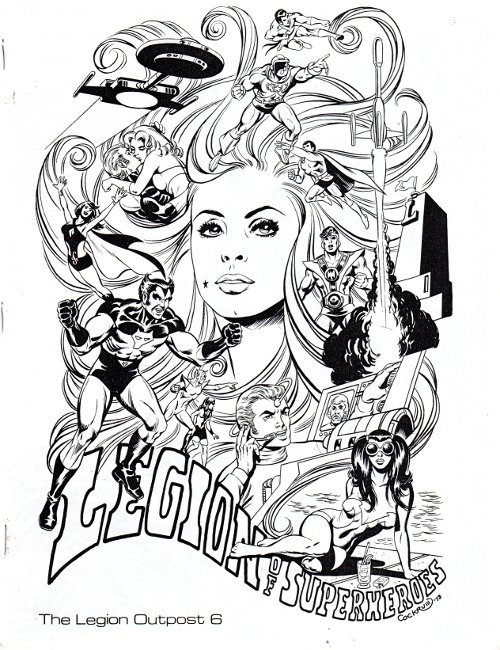
I’ve heard wrestling described as “a soap opera for men.” If that’s the case, then Legion of Super-Heroes was a soap opera for nerds. The book is about attractive 20-somethings who seem to hook up all the time. As a result, it had a large female fanbase, which, I cannot stress enough, is incredibly unusual for this era in comics history. And if you have female fans, you get a lot of shipping and slashfic, and lots of speculation over which of the boy characters in the series is gay. The fanon answer is Element Lad, because he wore magenta-pink and never had a girlfriend. (Can’t argue with bulletproof logic like that.) In other words, it was a 1970s-80s fandom that felt much more “modern” than the more right-brained, bloodless, often anal scifi fandoms that existed around the same time, where letters pages were just nitpicking science errors by model train and elevator enthusiasts.
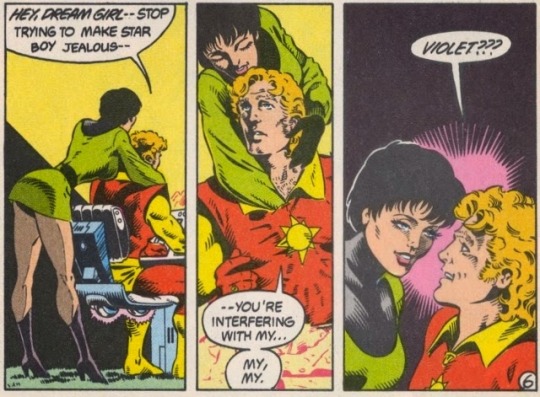

Legion Headquarters seemed to be a rabbit fuck den built around a supercomputer and Danger Room. Cosmic Boy dressed like Tim Curry in Rocky Horror. There’s one member, Duo Damsel, who can turn into two people, a power that, in the words of Legion writer Jim Shooter, was “useful for weird sex...and not much else.”
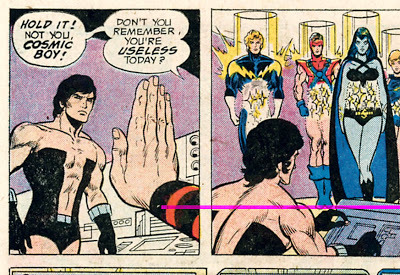
LSH was popular because the fans were insanely horny. This is, beyond the shadow of a doubt, the thirstiest fandom of all time. You might think I’m overselling this, but I really think that’s an under-analyzed part of how some kinds of fiction build a devoted fanbase.
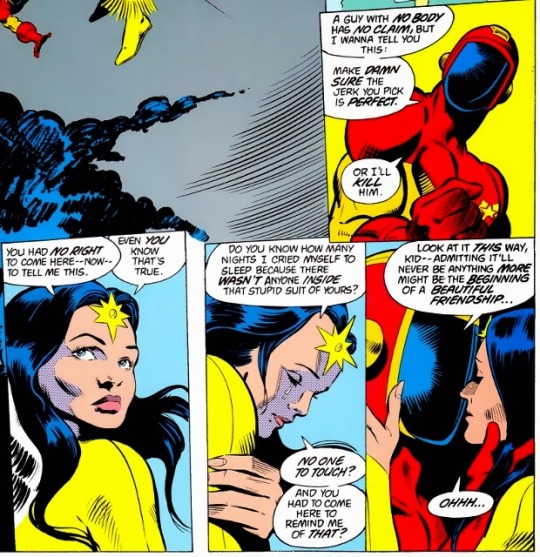
For example, a big reason for the success of Mass Effect is that everyone has a favorite girl or boy, and you have the option to romance them. Likewise, everyone who was a fan of Legion remembers having a crush. Sardonic Ultra Boy for some reason was a favorite among gay male nerds (aka the Robert Conrad Effect). Tall, blonde, amazonian telepath Saturn Girl, maybe the first female team leader in comics history, is for the guys with backbone who prefer Veronica over Betty. Shrinking Violet was a cute Audrey Hepburn type. And don’t forget Shadow Lass, who was a blue skinned alien babe with pointed ears and is heavily implied to have an accent (she was Aayla Secura before Aayla Secura was Aayla Secura). Light Lass was commonly believed to be “coded lesbian” because of a short haircut and her relationships with men didn’t work out. The point is, it’s one thing to read about the adventures of a superteam, and it implies a totally different level of mental and emotional involvement to read the adventures of your imaginary girlfriend/boyfriend.
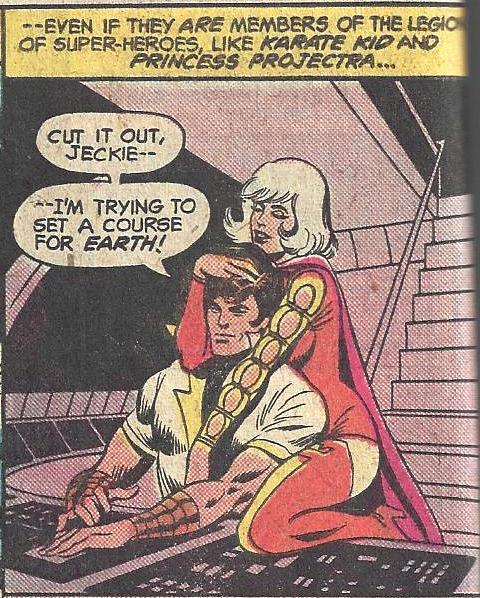
Now, I should point out that of all the fandoms I’ve examined here, LSH was maybe the smallest. Legion was never a top seller, but it was a favorite of the most devoted of fans who kept it alive all through the seventies and eighties with an energy and intensity disproportionate to their actual numbers. My gosh, were LSH fans devoted! Interlac and Legion Outpost were two Legion fanzines that are some of the most famous fanzines in comics history.

If nerd culture fandoms were drugs, Star Wars would be alcohol, Doctor Who would be weed, but Legion of Super-Heroes would be injecting heroin directly into your eyeballs. Maybe it is because the Legionnaires were nerdy, too: they played Dungeons and Dragons in their off time (an escape, no doubt, from their humdrum, mundane lives as galaxy-rescuing superheroes). There were sometimes call outs to Monty Python. Basically, the whole thing had a feel like the dorkily earnest skits or filk-singing at a con. Legion felt like it’s own fan series, guest starring Patton Oswalt and Felicia Day.

It helped that the boundary between fandom and professional was incredibly porous. For instance, pro-artist Dave Cockrum did covers for Legion fanzines. Former Legion APA members Todd and Mary Biernbaum got a chance to actually write Legion, where, with the gusto of former slashfic writers given the keys to canon, their major contribution was a subplot that explicitly made Element Lad gay. Mike Grell, a professional artist who got paid to work on the series, did vaguely porno-ish fan art. Again, it’s hard to tell where the pros started and the fandom ended; the inmates were running the asylum.
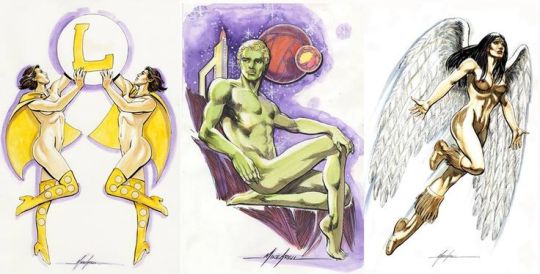

Mostly, Legion earned this devotion because it could reward it in a way no other comic could. Because Legion was not a wide market comic but was bought by a core audience, after a point, there were no self-contained one-and-done Legion stories. In fact, there weren’t even really arcs as we know it, which is why Legion always has problems getting reprinted in trade form. Legion was plotted like a daytime soap opera: there were always five different stories going on in every issue, and a comic involved cutting between them. Sure, like daytime soap operas, there’s never a beginning, just endless middles, so it was totally impossible for a newbie to jump on board...but soap operas know what they are doing: long term storytelling rewards a long term reader.
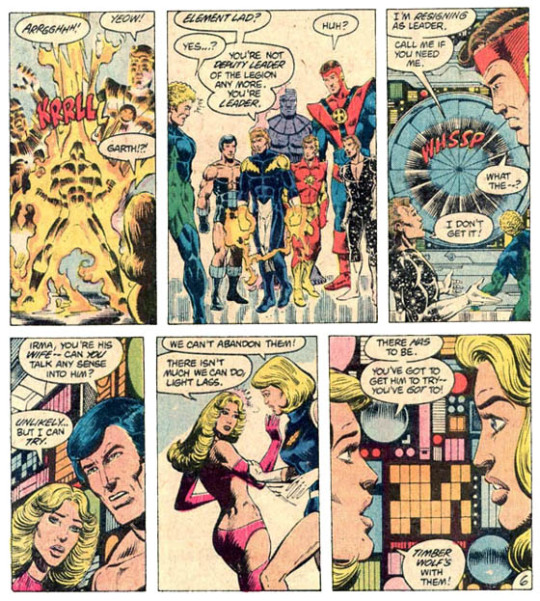
This brings me to today, where Legion is no longer being published by DC. There is no discussion about a movie or TV revival. This is amazing. Comics are a world where the tiniest nerd groups get pandered to: Micronauts, Weirdworld, Seeker 3000, and Rom have had revival series, for pete’s sake. It’s incredible there’s no discussion of a film or TV treatment, either; friggin Cyborg from New Teen Titans is getting a solo movie.
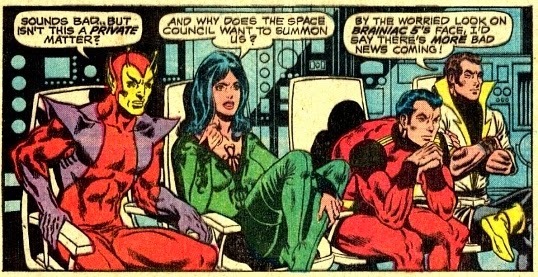
Why did Legion stop being such a big deal? Where did the fandom that supported it dissolve to? One word: X-Men. Legion was incredibly ahead of its time. In the 60s and 70s, there were barely any “fan” comics, since superhero comics were like animation is today: mostly aimed at kids, with a minority of discerning adult/teen fans, and it was success among kids, not fans, that led to something being a top seller (hence, “fan favorites” in the 1970s, as surprising as it is to us today, often did not get a lot of work, like Don MacGregor or Barry Smith). But as newsstands started to push comics out, the fan audience started to get bigger and more important…everyone else started to catch up to the things that made Legion unique: most comics started to have attractive people who paired up into couples and/or love triangles, and featured extremely byzantine long term storytelling. If Legion of Super-Heroes is going to be remembered for anything, it’s for being the smaller scale “John the Baptist” to the phenomenon of X-Men, the ultimate “fan” comic.

The other thing that killed Legion, apart from Marvel’s Merry Mutants, that is, was the r-word: reboots. A reboot only works for some properties, but not others. You reboot something when you want to find something for a mass audience to respond to, like with Zorro, Batman, or Godzilla.
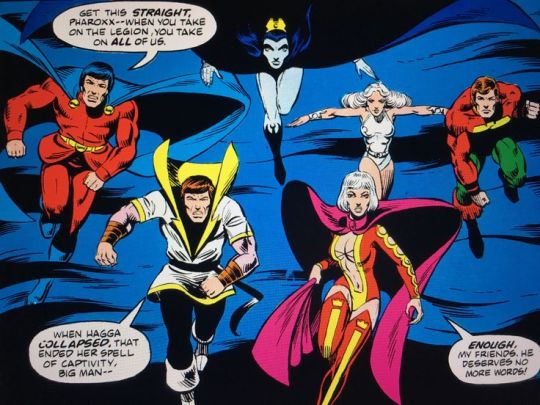
Legion, though, was not a comic for everybody, it was a fanboy/girl comic beloved by a niche who read it for continuing stories and minutiae (and to jack off, and in some cases, jill off). Rebooting a comic like that is a bad idea. You do not reboot something where the main way you engage with the property, the greatest strength, is the accumulated lore and history. Rebooting a property like that means losing the reason people like it, and unless it’s something with a wide audience, you only lose fans and won’t get anything in return for it. So for something like Legion (small fandom obsessed with long form plots and details, but unlike Trek, no name recognition) a reboot is the ultimate Achilles heel that shatters everything, a self-destruct button they kept hitting over and over and over until there was nothing at all left.
E. E. Smith’s Lensman Novels
The Lensman series is like Gil Evans’s jazz: it’s your grandparents’ favorite thing that you’ve never heard of.

I mean, have you ever wondered exactly what scifi fandom talked about before the rise of the major core texts and cultural objects (Star Trek, Asimov, etc)? Well, it was this. Lensmen was the subject of fanfiction mailed in manilla envelopes during the 30s, 40s, and 50s (some of which are still around). If you’re from Boston, you might recognize that the two biggest and oldest scifi cons there going back to the 1940s, Boskone (Boscon, get it?) and Arisia, are references to the Lensman series. This series not only created space opera as we know it, but contributed two of the biggest visuals in scifi, the interstellar police drawn from different alien species, and space marines in power armor.

My favorite sign of how big this series was and how fans responded to it, was a great wedding held at Worldcon that duplicated Kimball Kinnison and Clarissa’s wedding on Klovia. This is adorable:
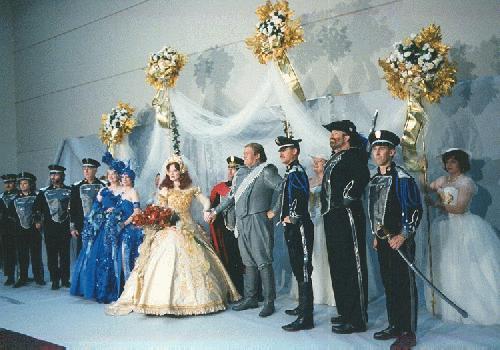
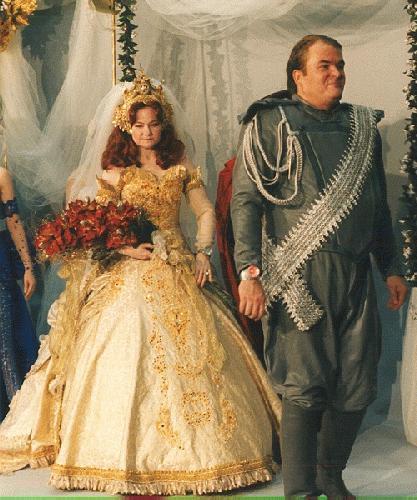
The basic story is pure good vs. evil: galactic civilization faces a crime and piracy wave of unprecedented proportions from technologically advanced pirates (the memory of Prohibition, where criminals had superior firearms and faster cars than the cops, was strong by the mid-1930s). A young officer, Kimball Kinnison (who speaks in a Stan Lee esque style of dialogue known as “mid-century American wiseass”), graduates the academy and is granted a Lens, an object from an ancient mystery civilization, who’s true purpose is unknown.
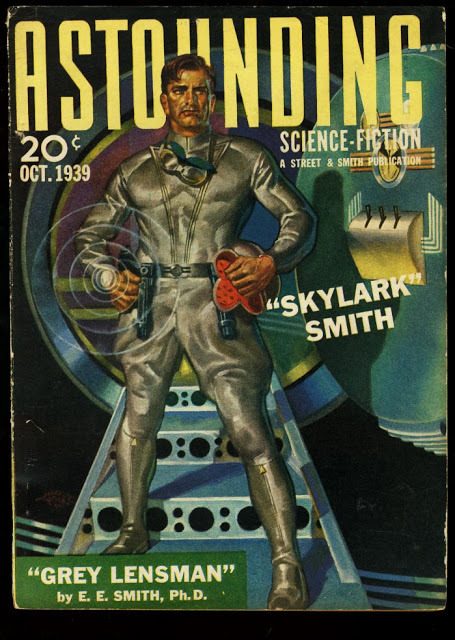
Lensman Kinnison discovers that the “crime wave” is actually a hostile invasion and assault by a totally alien culture that is based on hierarchy, intolerant of failure, and at the highest level, is ruled by horrifying nightmare things that breathe freezing poison gases. Along the way, he picks up allies, like van Buskirk, a variant human space marine from a heavy gravity planet who can do a standing jump of 20 feet in full space armor, Worsel, a telepathic dragon warrior scientist with the technical improvisation skills of MacGyver (who reads like the most sadistically minmaxed munchkinized RPG character of all time), and Nandreck, a psychologist from a Pluto-like planet of selfish cowards.

The scale of the conflict starts small, just skirmishes with pirates, but explodes to near apocalyptic dimensions. This series has space battles with millions of starships emerging from hyperspacial tubes to attack the ultragood Arisians, homeworld of the first intelligent race in the cosmos. By the end of the fourth book, there are mind battles where the reflected and parried mental beams leave hundreds of innocent bystanders dead. In the meantime we get evil Black Lensmen, the Hell Hole in Space, and superweapons like the Negasphere and the Sunbeam, where an entire solar system was turned into a vacuum tube.
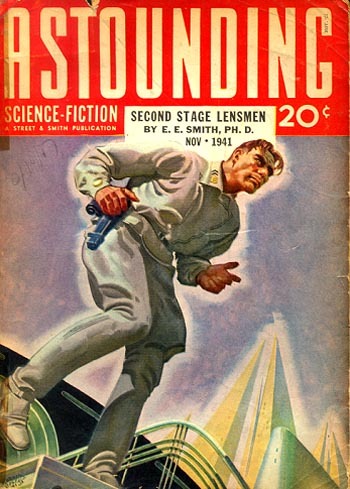
It’s not hard to understand why Lensmen faded in importance. While the alien Lensmen had lively psychologies, Lensman Kimball Kinnison was not an interesting person, and that’s a problem when scifi starts to become more about characterization. The Lensman books, with their love of police and their sexism (it is an explicit plot point that the Lens is incompatible with female minds – in canon there are no female Lensmen) led to it being judged harshly by the New Wave writers of the 1960s, who viewed it all as borderline fascist military-scifi establishment hokum, and the reputation of the series never recovered from the spirit of that decade.
Prisoner of Zenda
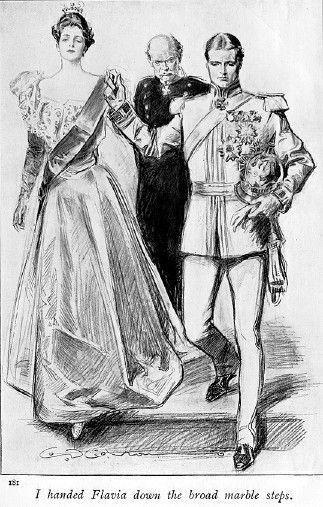
Prisoner of Zenda is a novel about a roguish con-man who visits a postage-stamp, charmingly picturesque Central European kingdom with storybook castles, where he finds he looks just like the local king and is forced to pose as him in palace intrigues. It’s a swashbuckling story about mistaken identity, swordfighting, and intrigue, one part swashbuckler and one part dark political thriller.
The popularity of this book predates organized fandom as we know it, so I wonder if “fandom” is even the right word to use. All the same, it inspired fanatical dedication from readers. There was such a popular hunger for it that an entire library could be filled with nothing but rip-offs of Prisoner of Zenda. If you have a favorite writer who was active between 1900-1950, I guarantee he probably wrote at least one Prisoner of Zenda rip-off (which is nearly always the least-read book in his oeuvre). The only novel in the 20th Century that inspired more imitators was Sherlock Holmes. Robert Heinlein and Edmond “Planet Smasher” Hamilton wrote scifi updates of Prisoner of Zenda. Doctor Who lifted the plot wholesale for the Tom Baker era episode, “Androids of Tara,” Futurama did this exact plot too, and even Marvel Comics has its own copy of Ruritania, Doctor Doom’s Kingdom of Latveria. Even as late as the 1980s, every kids’ cartoon did a “Prisoner of Zenda” episode, one of the stock plots alongside “everyone gets hit by a shrink ray” and the Christmas Carol episode.
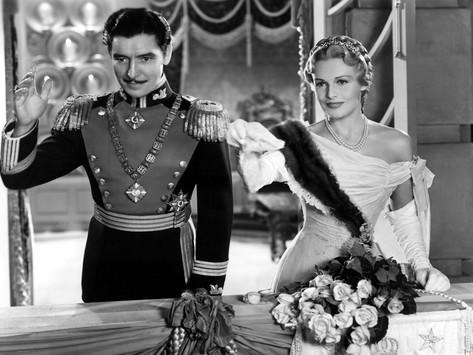
Prisoner of Zenda imitators were so numerous, that they even have their own Library of Congress sub-heading, of “Ruritanian Romance.”
One major reason that Prisoner of Zenda fandom died off is that, between World War I and World War II, there was a brutal lack of sympathy for anything that seemed slightly German, and it seems the incredibly Central European Prisoner of Zenda was a casualty of this. Far and away, the largest immigrant group in the United States through the entire 19th Century were Germans, who were more numerous than Irish or Italians. There were entire cities in the Midwest that were two-thirds German-born or German-descent, who met in Biergartens and German community centers that now no longer exist.

Kurt Vonnegut wrote a lot about how the German-American world he grew up in vanished because of the prejudice of the World Wars, and that disappearance was so extensive that it was retroactive, like someone did a DC comic-style continuity reboot where it all never happened: Germans, despite being the largest immigrant group in US history, are left out of the immigrant story. The “Little Bohemias” and “Little Berlins” that were once everywhere no longer exist. There is no holiday dedicated to people of German ancestry in the US, the way the Irish have St. Patrick’s Day or Italians have Columbus Day (there is Von Steuben’s Day, dedicated to a general who fought with George Washington, but it’s a strictly Midwest thing most people outside the region have never heard of, like Sweetest Day). If you’re reading this and you’re an academic, and you’re not sure what to do your dissertation on, try writing about the German-American immigrant world of the 19th and 20th Centuries, because it’s a criminally under-researched topic.
A. Merritt

Pop quiz: who was the most popular and influential fantasy author during the 1930s and 40s?
If you answered Tolkien or Robert E. Howard, you’re wrong - it was actually Abraham Merritt. He was the most popular writer of his age of the kind of fiction he did, and he’s since been mostly forgotten. Gary Gygax, creator of Dungeons and Dragons, has said that A. Merritt was his favorite fantasy and horror novelist.

Why did A. Merritt and his fandom go away, when at one point, he was THE fantasy author? Well, obviously one big answer was the 1960s counterculture, which brought different writers like Tolkien and Lovecraft to the forefront (by modern standards Lovecraft isn’t a fantasy author, but he was produced by the same early century genre-fluid effluvium that produced Merritt and the rest). The other answer is that A. Merritt was so totally a product of the weird occult speculation of his age that it’s hard to even imagine him clicking with audiences in other eras. His work is based on fringe weirdness that appealed to early 20th Century spiritualism and made sense at the time: reincarnation, racial memory, an obsession with lost race stories and the stone age, and weirdness like the 1920s belief that the Polar Arctic is the ancestral home of the Caucasian race. In other words, it’s impossible to explain Merritt without a ton of sentences that start with “well, people in the 1920s thought that...” That’s not a good sign when it comes to his universality.
That’s it for now. Do you have any suggestions on a dead fandom, or do you keep one of these “dead” fandoms alive in your heart?
3K notes
·
View notes
Text
Here Are The 12 Best New Movies That Hit Netflix This Past Week
New Post has been published on https://perfectirishgifts.com/here-are-the-12-best-new-movies-that-hit-netflix-this-past-week/
Here Are The 12 Best New Movies That Hit Netflix This Past Week
50 First Dates
On Tuesday, dozens of new films hit Netflix NFLX . There are so many great ones to choose from…so where do you start?
Hopefully, this list can help. Here are ten great new movie options to consider on Netflix. And at the end of the article, you can find every new movie that will be added to Netflix throughout December.
50 First Dates (2004)
Adam Sandler and Drew Barrymore have proven to be a great on-screen couple. First came The Wedding Singer, and 2014 gave us Blended. But their best effort may have been 50 First Dates, a film in which Sandler’s character falls in love with a woman who has amnesia and can never remember what happened the day before.
A Thin Line Between Love and Hate (1996)
It seems that much of Martin Lawrence’s work didn’t age well for many people. But I would encourage anyone to go back and give his early work a chance, as movies like A Thin Line Between Love and Hate (which Lawrence wrote and directed) are dark and romantic in a way that might surprise you. The film focuses on Lawrence’s character, Darnell, who is targeted by an obsessive ex-lover.
Chef (2014)
Jon Favreau has of course directed some of the biggest movies of the past decade, including Iron Man and The Lion King. But in 2014, he made and starred in a little-seen movie called Chef that delighted audiences. The film follows a chef who quits his position at a prestigious restaurant and decides to launch his own food truck.
Effie Gray (2014)
Dakota Fanning has never been as prominent of an actress as she was during her early days. But she actually still continues to churn out great performances, including her portrayal as Effie Gray. This biographical film, written by Emma Thompson, follows Gray as she marries distinguished writer John Rusin. But Effie soon starts to feel ill as her husband stifles her at home.
E.T. the Extra-Terrestrial (1982)
Ah, a classic! To this day, E.T. the Extra-Terrestrial might be my favorite Steven Spielberg movie. This is a great pick for anyone who hasn’t seen the 1980s classic sci-fi family movie (or is just looking to rediscover its beauty). The movie centers on an alien that crash-lands on Earth and then befriends a young boy. The boy must then try to help the alien make its way home.
The Jurassic Park Trilogy (1993, 1997, 2001)
I’m sure many of us have seen Jurassic Park. But what about the second and third movie? I recently watched all three myself, and I believe it’s a worthy triple-feature experience. The movies take place in a world where we’ve been able to recreate dinosaurs using prehistoric DNA.
Kung Fu Panda 2 (2011)
At the time of release, Kung Fu Panda was a welcome departure from the same-old-same-old we had come to expect from animated movies. And the DreamWorks classic kept that energy up for the sequel as well. Kung Fu Panda 2 follows Po as he battles a new villain that threatens the Valley of Peace.
Monster House (2006)
The 2000s were rich with underrated and under-seen animated movies. And that includes Monster House, which was dark and scary in a way that most animated movies these days won’t touch. The film centers on three kids who believe one of the homes in their neighborhood is haunted.
Quigley Down Under (1990)
When I was a kid, I was essentially forced to watch lots of westerns because of my dad. At the time, the genre annoyed me…but as I’ve gotten older, I’ve gained a soft spot for westerns. And that includes the great Quigley Down Under, in which an American rifleman travels to Australia for a job. After his employer turns on him and leaves him to die in the outback, the man plots his revenge.
Runaway Bride (1999)
As opposed to the westerns my dad constantly watched, I actually have fond memories of Runaway Bride when it came out in 1999. This classic romance follows a woman named Maggie, who is deemed the “Runaway Bride” after leaving three different men at the altar. A journalist plans to write about her fourth trip down the aisle, but then unexpectedly falls in love with her.
Every New Movie Added to Netflix in December
Available December 1
3 Days to Kill
50 First Dates
A Thin Line Between Love and Hate
Angela’s Christmas Wish
Angels and Demons
Chef
The Da Vinci Code
E.T. the Extra-Terrestrial
Effie Gray
The Happytime Murders
The Holiday Movies That Made Us
Jurassic Park
Jurassic Park III
Kung Fu Panda 2
Little Nicky
The Lost World: Jurassic Park
Monster House
Peppermint
Quigley Down Under
Runaway Bride
Tyler Perry’s Madea’s Big Happy Family
Why Did I Get Married?
Available December 2
Alien Worlds
Fierce
Available December 3
Break
Chico Bon Bon and the Very Berry Holiday
Just Another Christmas
Available December 4
Bhaag Beanie Bhaag
Bombay Rose
Captain Underpants Mega Blissmas
Christmas Crossfire
Leyla Everlasting
MANK
Available December 5
Detention
Mighty Express: A Mighty Christmas
Available December 7
Ava
Manhunt: Deadly Games
Available December 8
Bobbleheads the Movie
AmarElo – É Tudo Pra Ontem
Lovestruck in the City
Spirit Riding Free: Ride Along Adventure
Super Monsters: Santa’s Super Monster Helpers
Triple 9
Available December 9
Ashley Garcia: Genius in Love: Christmas
The Big Show Show: Christmas
Rose Island
The Surgeon’s Cut
Available December 10
Alice in Borderland
Available December 11
A Trash Truck Christmas
Canvas
Giving Voice
The Mess You Leave Behind
The Prom
Available December 14
A California Christmas
Tiny Pretty Things
Available December 15
The Grizzlies
The Professor and the Madman
Available December 16
Anitta: Made in Honorio
BREAK IT ALL: The History of Rock in Latin America
How to Ruin Christmas: The Wedding
Nocturnal Animals
The Ripper
Run On
Vir Das: Outside In – The Lockdown Special
Available December 17
Braven
Available December 18
Guest House
Ma Rainey’s Black Bottom
Sweet Home
Available December 21
The Con is On
Available December 22
After We Collided
Rhyme Time Town Singalongs
Shaun the Sheep: The Farmer’s Llamas
Available December 23
The Midnight Sky
Your Name Engraved Herein
Available December 25
Bridgerton
Available December 26
Asphalt Burning
DNA
The Magic School Bus Rides Again in the Zone
Available December 28
Cops and Robbers
Rango
Available December 30
Best Leftovers Ever!
Equinox
From Hollywood & Entertainment in Perfectirishgifts
0 notes